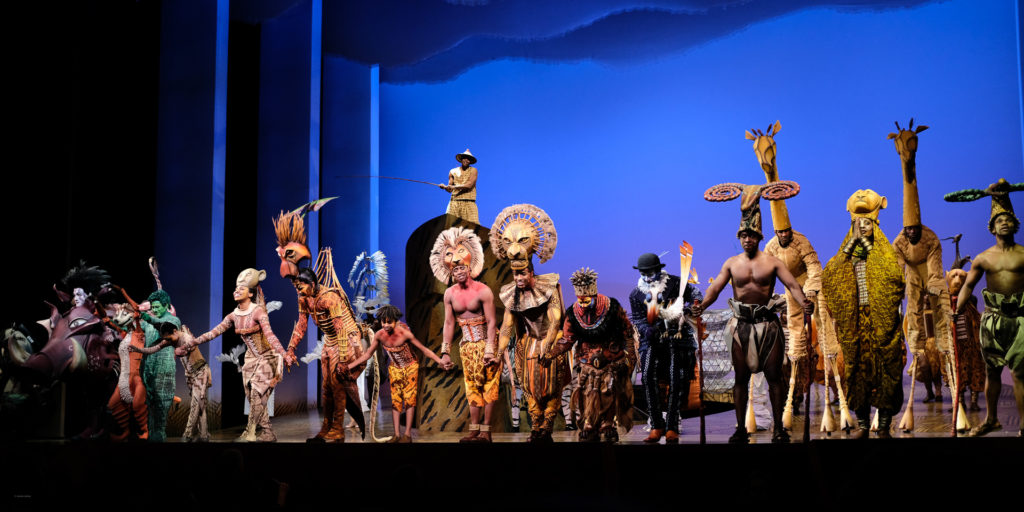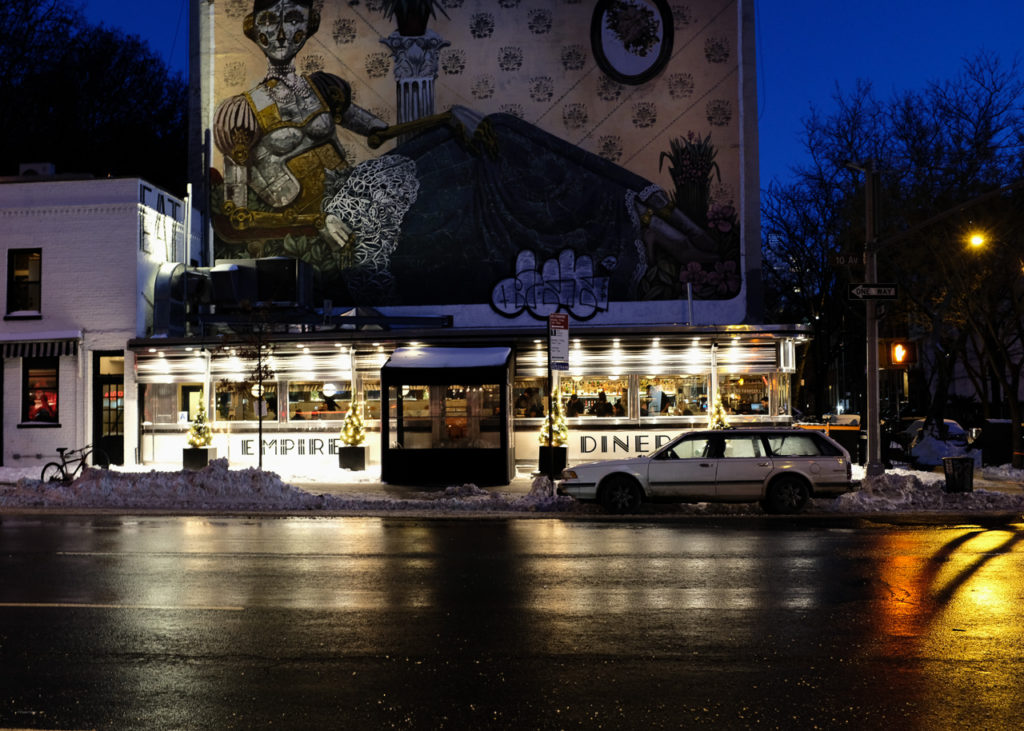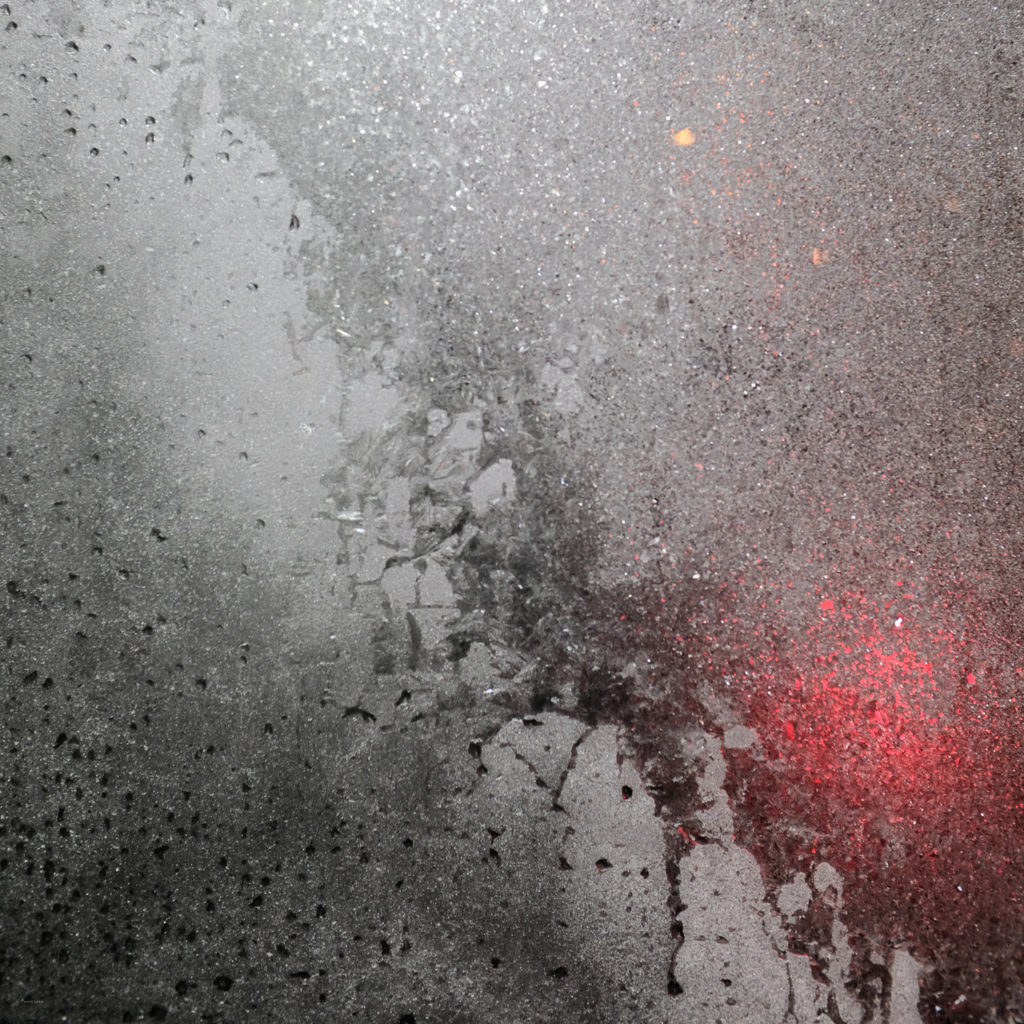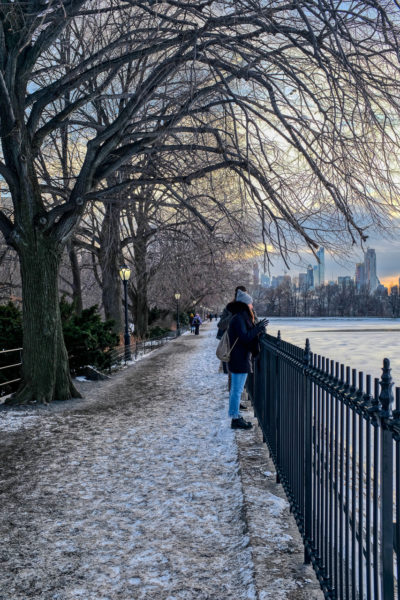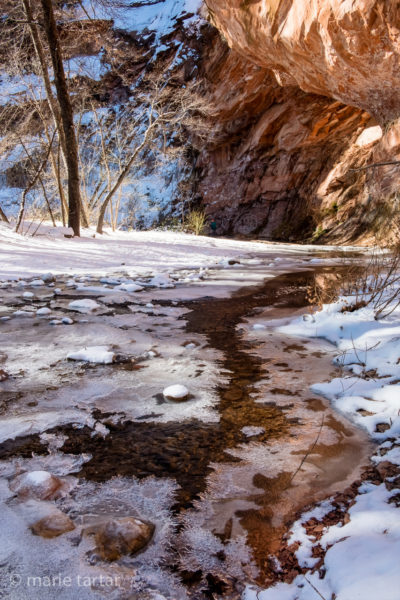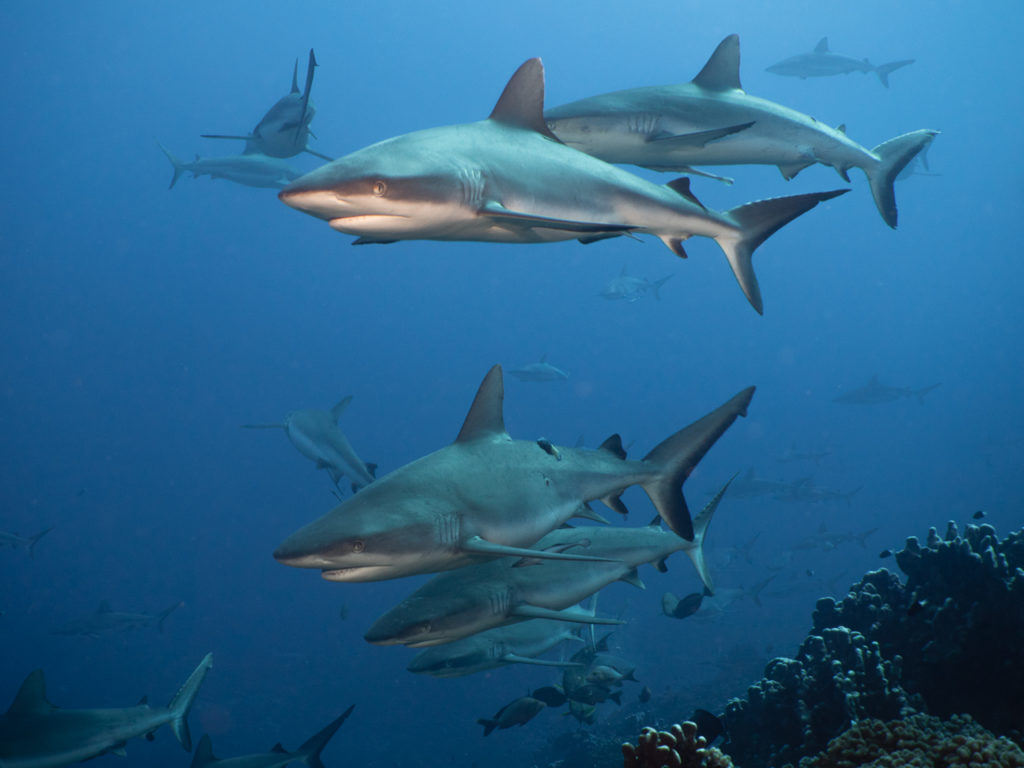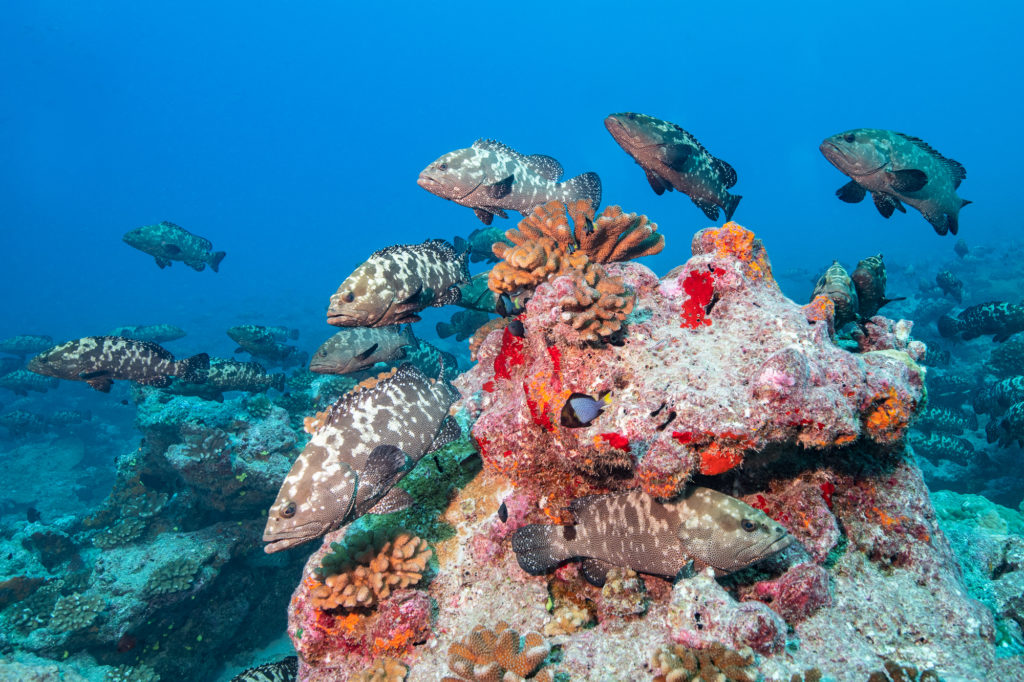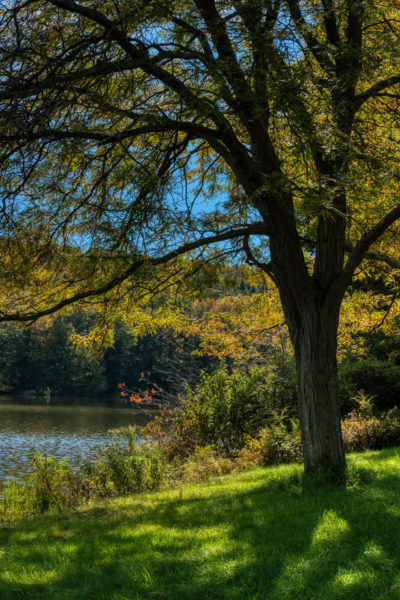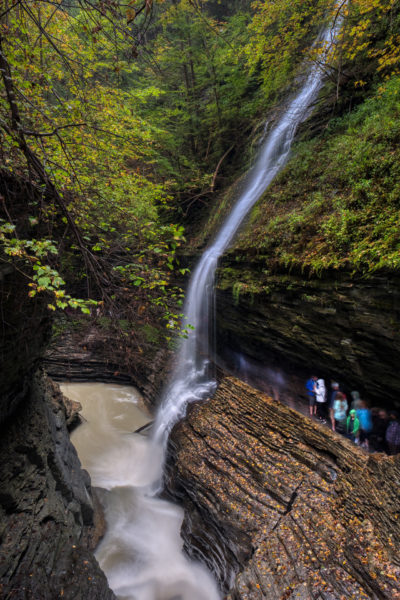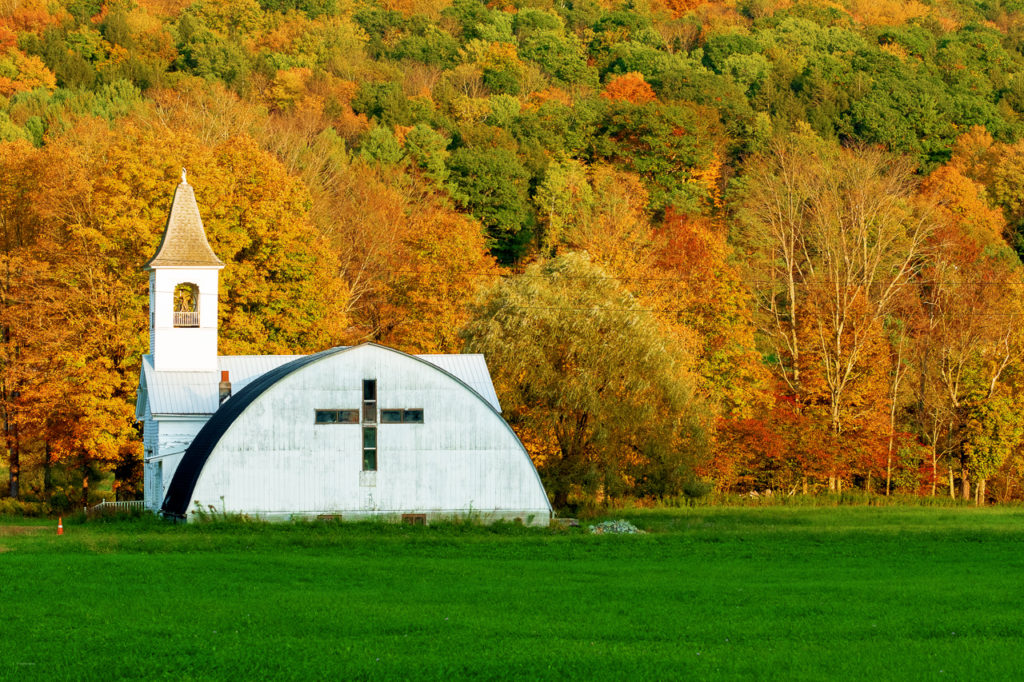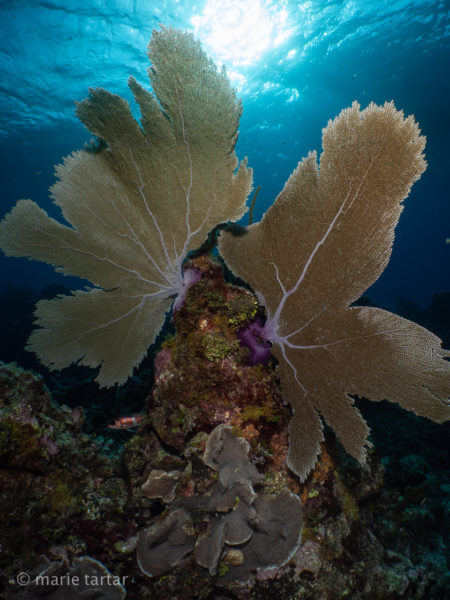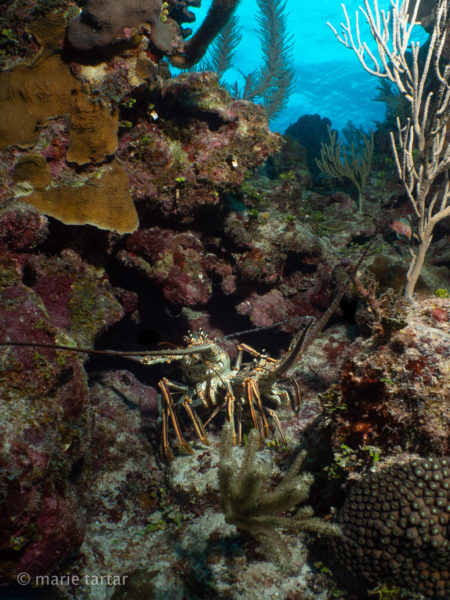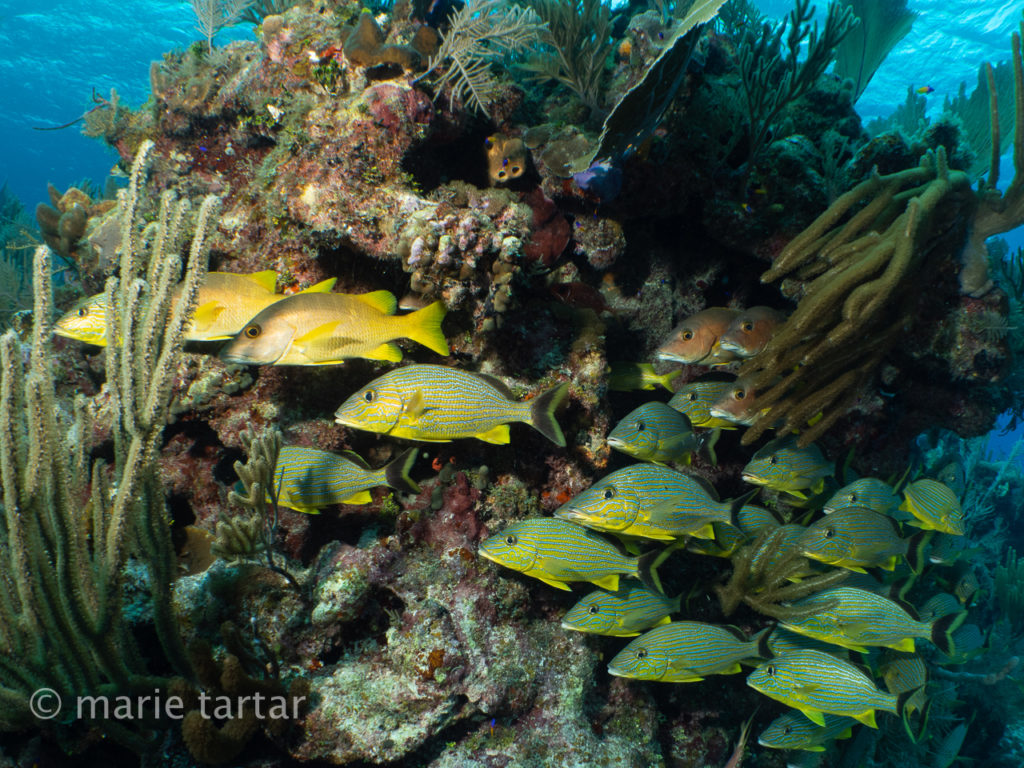
2018 was a year in which aging, mortality and illness reared their ugly heads, in the family and our circle of friends. We got off fairly lightly in the scheme of things, although there were times during and after our winter trip to Japan when I wondered if I would ever feel well again. I was increasingly pre-occupied with Mama’s short-term memory issues and precarious living situation. My new hobby became touring assisted living facilities, online and in person, both in San Diego and in New York. I had to accept that there are no quick solutions when it comes to elder care, only a multitude of tasks to line up and knock down. We tried our best to combat our own encroaching mortality by traveling often and reading widely, even making it back into our cold local waters after a many-year absence. The length of this post is a testament to the degree to which we succeeded!
January, 2018
The New Year got off to a rough start. I awoke with a swollen, red eyelid, while Steve still had a hacking cough lingering from his miserable year’s end cold. We perked up enough to host a small dinner party. Our friend Denise moved for work to the Bay area the prior year, but was down for the holidays. Denise and Dana procured the famous North County margo tart for dessert, and John and Joan brought a salad to accompany our sous vide Cardiff crack (tri-tip) and asparagus. Unfortunately, we overdid it, cooking it 24 hours. Although it tasted good, the texture was disappointing-mushy baby food! Only my rice cooker wild rice with jalapenos and sour cherries was up to our usual standards.
We were scheduled to take a red eye to New York on Friday, Jan 5. The weekend before, the phone rang at home. It was Ron, offering us a ride east on Saturday. He and Lucille were headed to NY to celebrate Lucille’s birthday, and our mutual friends Ralph and Gail were catching a ride with them. It was a difficult choice (coach red eye vs. private jet)-not! As it happened, a “bomb cyclone” storm ultimately canceled our scheduled commercial flights. But for catching this ride, we probably would not have made it to NY this particular weekend.
The trip across country was most pleasant, our best ever certainly (spoiled forever!). We arrived to Teterboro, New Jersey to frigid cold, which hung on the entire long weekend. We made it in time to see for the first time (after playing for 20 years on Broadway), The Lion King. An article in the New York Times in November highlighting the Lion King effect on the lives of South African performers who are alumni of show stimulated my interest. From the first moment when jungle animals strolled down the aisles toward the stage, we were captivated by the pageantry of the costumes and textiles.
From being cosseted in private jet luxury, our first night in the apartment this trip was a stark contrast, virtually camping in the cold. This was our second stay in the new apartment. Although it had been cold on our prior stay in November, January was record-breaking. We hadn’t had the air conditioner deinstalled from the bedroom and hadn’t yet procured a winter-ready comforter. Although I wore 2 sets of long johns , a hoody thermal top and a fleece cap to bed, I just about froze that night and slept miserably.
Our firefighter brother-in-law Aaron came to our rescue during our stay, making de-installing an air conditioner look easy (he actually has to do this at times to rescue people from apartments). That stemmed the cold air leak and we ordered a comforter.
This was my first trip with my new, tiny street camera, the Fujifilm X100-F.
Saturday, January 6, 2018
After a miserable cold night, we warmed up at Chelsea Market, sharing a short rib grain bowl and pork belly sandwich from Cambodian mini-chain Num Pang. We were headed to Say Something Bunny, recommended by Jim Sadwith; the storm cancellation of Thursday’s performance prompted the addition of a Saturday matinee, giving us an opening during our narrow window for an otherwise fully booked show. This is a one woman show by Alison Kobayashi (in collaboration with her husband) in a tiny Chelsea venue, limited to 24 audience members. Two garage sale-find wire recordings launched Alison on a journey of deduction, in which she discerned through multiple listenings the identities of the family on the recordings, as well as the timeframe and cultural context. It was a remarkable performance piece, with the audience seated at a semi-circular table, following the recordings with a transcription. A sequence from a film of children frolicking on a beach reminded me of a ‘Steve and Peter on the beach’ shot by Steve’s dad that I always loved.
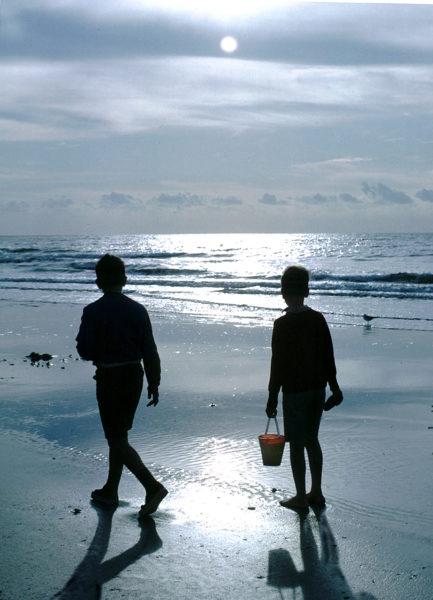
I always loved this image by Steve’s father (also a doctor and photographer) of Steve and his cousin Peter (exactly 1 year older) at the beach, presumably the Jersey shore. A gilt-framed enlargement hung in his parent’s dining room.
We took a quick spin through Yossi Milo gallery and Commes des Garçons before meeting Sarah and Aaron after work at nearby Cookshop on Tenth Avenue. Steve and Aaron went for the cassoulet, with citrus salad and soup for me. We shared an apple clafoutis for dessert. Thoughtful Sarah brought us a down comforter to borrow, while Aaron de-installed our air conditioners, instantly improving the cold air leak situation.
Sunday, January 7, 2018 was cold and sunny.
After a much better night, we lunched at Sant Ambroeus (spaghetti carbonara and baby kale salad), The afternoon saw Steve hanging out of one of our windows with a Swiffer, trying to snare an unsightly wad of masking tape, dangling from a bare tree branch. Sarah accompanied us to see Lady Bird at the 86th Street Cinema. The heat was out in the theater, but no one took advantage of a refund offer redeemable within the first 10 minutes. The theater wasn’t THAT cold and the film was very engaging.
Aaron rejoined us afterwards, with Chopstick, who flopped onto her red travel bed, until I made the mistake of lying down on the living room carpet.
“Brains, brains.” Somehow, this is the signal for normally placid Choppie to transform into a licking, dog hair transferring, affectionate menace. Chopstick is so low to the ground that it probably doesn’t have many opportunities to be dominant. Between the beige carpet below me and Choppie’s fur transference, my black cashmere sweater was a linty mess by the end of the evening. Luckily, it already was earmarked for a trip to the cleaners. Despite having already seen the opening scene of Get Out, I lurched with my wine glass during the scene’s climax, baptizing my sweater, enough to make it a target for moths.
We ordered food in from nearby San Mateo (rapini and sausage pizza, eggplant pannuo sandwich, bresaola and arugula salad). Our soon-to-be replaced doorbell system didn’t work well. Although we hear the buzzer fine, and it works fine to release the door, the intercom is so static-y that it impossible to confirm who is at the door. So, when the buzzer rang, I held it long enough to allow someone, I hoped the deliveryman, to enter, and headed down the stairs. In the lobby, I could smell the pizza, but found no deliveryman. I heard the elevator and guessed correctly he beat me upstairs.
Monday, January 8, 2018
Clarissa and Jason came bearing gifts, dishes, books and best of all, one of Jason’s artist mother Claire’s small sculptures of a fanciful horse.
Around the corner, we finally made it into Naruto Ramen by arriving just before they opened at noon. We were the first to enter, so we commandeered the corner seats, but it did not take long before the restaurant was completely full. The gyoza was delicious, but the ramen, although tasty, didn’t nudge Ippudo off its pedestal. Next trip, I want to try Ivan Ramen, the subject of a recently watched Chef’s Table episode.
We continued learning nuances of New York life, such as steering a Fairway shopping cart into an elevator to find the bread on another floor.

The concept of eating at a bar (as in a sushi bar) was once a radical haute cuisine concept, popularized by Robuchon in his l’Atelier restaurants.
In the evening, we celebrated Lucille’s birthday with a sumptuous meal at l’Atelier de Joël Robuchon, recently opened in NYC. Many years before, Steve and I had wandered into the Paris restaurant for a marvelous and memorable late lunch. The celebrated “Chef of the Century” would die of pancreatic cancer 8 months later.
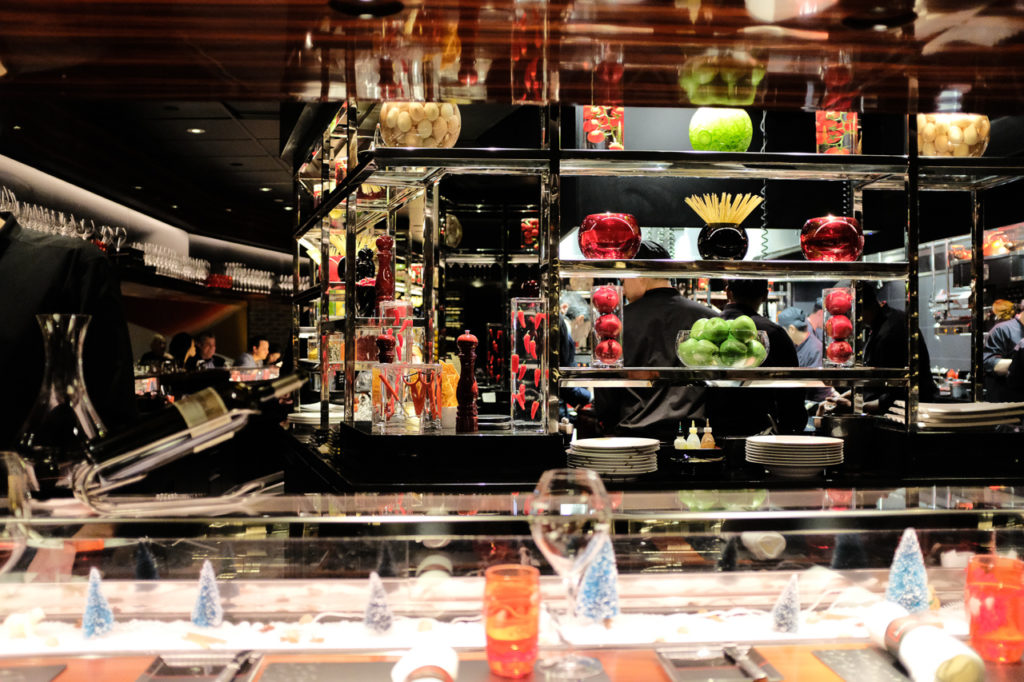
The red and black color scheme, the dazzling displays of jewel-like fruit, transported me back years ago to Paris and a memorable lunch at l’Atelier de Joël Robuchon.
Tuesday, January 9, 2018
After packing, we walked down Madison to the Met Breuer, to see the Delirious show and the Edvard Munch show, entitled Between the Clock and the Wall, named for one of his later self-portraits.
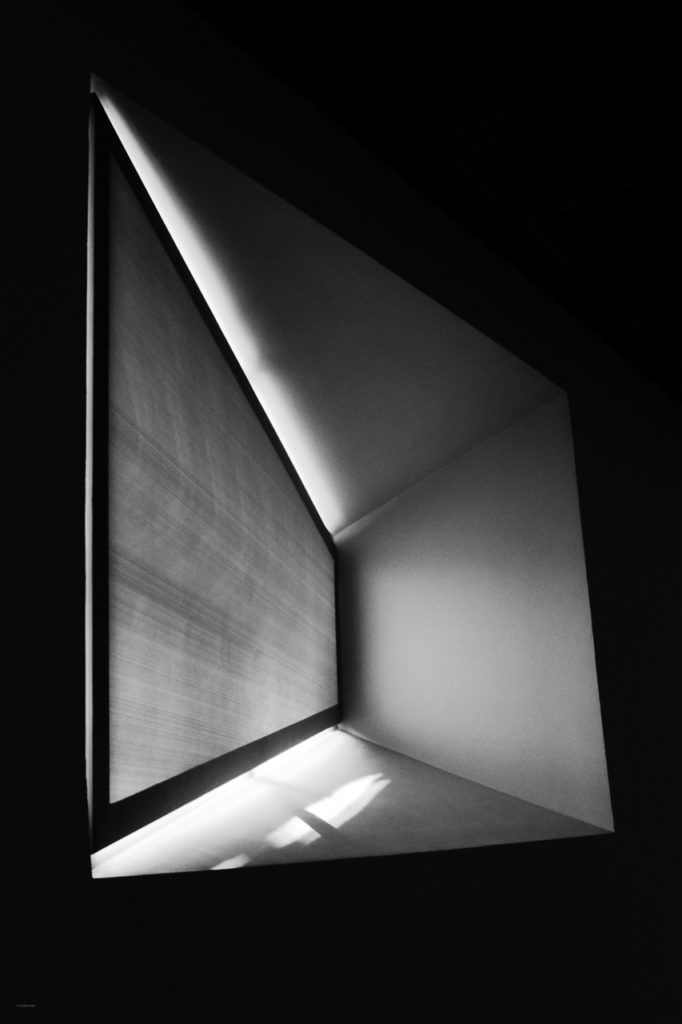
I always loved these oblique windows at the Marcel Breuer-designed former Whitney Museum, now the Met Breuer.
I watched three movies on the way home, too tired to read my book. The first was the animated Disney film of the Lion King, followed by the World War II story, Dunkirk, and finally a Chilean film called Los Perros. The Lion King, I now realized, is a classic for a reason. We had a twice removed connection with Dunkirk-our New York realtor, Leslie, attended the Academy awards at which her brother took home a statuette for his work on Dunkirk. Los Perros was an interesting film, directed by Marcela Said and starring Antonia Zegers as Mariana, a 40-something year old member of the Chilean upper crust, who becomes involved with her riding instructor, Juan (Alfredo Castro), a 60-ish former cavalry officer now accused of Pinochet-era human rights violations.
The next January weekend took me to Tucson for an ACR body MRI course at the greatly expanded and nearly unrecognizable University of Arizona Medical College. To ensure I’d have some fun during the weekend, I had persuaded one of my college roommates, Alisa, to join me from Sacramento. Alisa grew up in Tucson and was due to visit her widowed father. A text to Andy Burgess (one of my reviewers at the prior year’s Medium Festival) yielded intel on restaurants and happenings. We enjoyed dining at his recommendations, Cafe Poca Cosa and Downtown. He also alerted me to Masao Yamamoto lecturing on campus and an opening of his work the following evening at Etherton Gallery downtown. We had acquired a Masao Yamamoto of our own the prior year on the MOPA trip to San Francisco, so this was fortuitous. I was amazed how packed the auditorium was for the talk by this shy Japanese photographic artist, as well as at the opening the following night. I saved a seat for Alisa at the lecture and as the auditorium filled up, became increasingly self-conscious defending it.
In mid-January, we met at Ann’s house for book club, discussing Jenny Erpenbeck’s Go, Went, Gone, in which a retired classics professor in East Berlin, Richard, disturbs his placid existence by befriending African refuges suspended in bureaucratic limbo. This book received unanimous acclaim from the group; I had only made it through 25% (too busy chatting with Alisa on the plane home), but did finish it afterwards.
My return to work was notable for LJR voting against merging with us.
The weekend of January 20-23 was a working one at Mama’s in DFW. Steve arranged for delivery of a giant dumpster. Clarissa and Jason had cleared out much of garage by the time we arrived on Saturday afternoon, including remnants of our childhood swing set, concealed among the fortifications against the sagging garage door. We were trying to clear out enough junk to make the house easier to clean. It was a Pandora’s box, going through Daddy’s papers and trying to make inroads into unexpectedly full closets. Steve and Jason were better than Clarissa and me at staying focused on the task at hand, filling the giant dumpster. Along the way, doors were repaired, brighter lightbulbs were installed and a Ring video doorbell was hooked up, giving us a window into Mama’s comings and goings and a little peace of mind.
February:
Two weeks in Japan in winter was simultaneously the best of trips AND the worst of trips. On the wonderful side of the ledger was seeing the natural side of Japan, with fantastic wildlife shooting and ethereal snowy Hokkaido landscapes. Conversely, I sprained my ankle slipping on snow, while suffering bouts of an insistent hacking cough, leading to terrible intercostal rib pain and for one particularly miserable travel day, back spasm. A peculiarly unsympathetic leader did not help matters.
Details of this memorable trip are written up in a series of 8 (!) blogposts, beginning here:
I also wrote extensively about the photographic aspects of traveling in Japan for Photo Focus, beginning here:
We made it back to San Diego in time to help celebrate Ralph’s 50th birthday party at 9-10 in La Jolla and for the discussion of Arundhati Roy’s complex and ambitious The Ministry of Utmost Happiness at bookclub at Chandra’s.
By the end of February and the 24th annual Sedona International Film Festival, I was still recovering from the illness contracted in Japan. John and Joan drove out for the first half of the week. I was happy I was able to actually manage short hikes, 3 weeks after my sprain, including managing 4 stream crossings at snow-encrusted West Fork of Oak Creek.
Although I was clearly improving as the week began, toward mid-week, the cough began inexorably to return. By Thursday, the day John and Joan left for LA and grand-daughter babysitting duties, I was feverish, with chills and aching. I started a Z-pac and on returning home, had a CT which confirmed my suspected new diagnosis-sinusitis. A second course of antibiotics started me on the road to ultimate recovery.
March:
We celebrated my 58th birthday at home with a small dinner party. Bob and Debbie were in town from Hawaii to intersect with Nancy and Gerry. The four of them were leaving for Mexico the following day, doing back to back Monarch butterfly and grey whale trips. The menu was okinomiyaki, smashed cucumber salad and the famous mango tart.
I spent some money and time at the Chanel counter at Nordstrom’s having makeup professionally applied prior to attending the La Jolla Playhouse Gala, again at the wine tables sponsor by Miles and Tatiana and Ralph and Gail.

I called on a professional to up my make-up game prior to the La Jolla Playhouse gala-I never did master Make-up 101!
Clarissa and Jason came into town in time for the San Diego Latino Film Festival. We caught 2 films, Machuca (Chile) and El Ultimo Traje. I joined them for Florencia en el amazona at San Diego Opera. Dave Weidig came into town the second weekend and was wowed by the classical guitar and violin concert we took him to at the Athenaeum (no small praise, as he is a professional level guitarist himself). On Saturday, we hung out with Sloan and other friends of Barbara and Bay’s at their house in the evening. Sunday morning was devoted to an outing to Annie’s Canyon in San Elijo lagoon. The occasion was a chance to meet in person the family with whom we’ve done two exchanges in Iceland. Harpa, Julius, 10 year old Fredrick, 5 year old Stella and 5 month old baby Julius were on an extended series of home exchanges in the US. Claire, Clarissa and Jason joined us afterwards for brunch at the house, and Jan came over to catch up with Dave. The menu was simple: Ottolenghi wild rice and chicken salad, my first strata (arugula and gruyere) and fruit salad.
At the biennial MCASD auction, we were scooped at VERY last second by Larry Poteet’s millennial daughter, who placed an Ebay style bid at the last second just before the auction closed on a work we loved, a transilluminated radiographic piece by Elizabeth Turk. Debra later “persuaded” Larry to sell the work to us.
I skipped book club (under discussion, A Gentleman in Moscow by Amor Towles) in favor of a group meeting, the first to be held jointly with the former LJR,. I should have stuck with book club.
April:
Saturday of Easter weekend was devoted to a girl’s outing up to LA with Symphorosa, Vivian and Barbara to see Allegiance at the Aratani Theater in Little Tokyo. We had to hurry through lunch at Izakaya Gazen nearby, thanks to horrendous traffic on the way. Rosa’s friend Ethan Le Phong was wonderful playing young Sammy Kimura.
At the OMA auction, Steve’s donation of a sepia toned image of a langorous snow monkey in a hot spring saw a lot of action.
We took home a San Diego eclipse image by David Fokos. We finished up the evening going out to dinner afterwards with Monica and Charley at The Flying Pig, sitting outside by the fire in the hint of a mist.
American Mariachi at the Old Globe was a touching tale of a family whose matriarch is succumbing to dementia. Her daughter decides to form a female mariachi band when she sees her mother respond to a particular song.
We had our first glimpse of a new show at MOPA: Hidden Worlds. Images from Steve’s series of radiographic images of toy robots hung alongside snowflake work of Doug and Mike Starn, stereoscopic fantastical landscapes of Jim Naughten, surrealistic imagery of Jo Whalen and radiographic based images of David Maisel, exalted company, indeed!
We spent two glorious April weeks in NYC, our longest stay ever, timed to coincide with the Tribeca Film Festival. Spring was “busting out all over”, alternating April showers with sunny and cool days. Flowering pear, cherry and magnolia trees were in abundance, including a particularly concentrated grove at our entrance to Central Park.

Spring in Central Park: The statue of the angel Bethesda in Central Park is invoked in Angels in America. Its design by Emma Stebbins in 1868 is the first major artwork commission by a woman artist in NYC.
Our near daily routines included long walks in the park, catching up with old friends or en route to the theater district for shows. Steve’s college roommate and friend, Kevin, came into Manhattan from Connecticut by train one Saturday, and on another day, Roz drove in from Bovina, 3 hours away. Angels in America occupied consecutive Sunday matinees, with other evenings devoted to Three Tall Women with Glenda Jackson, Laurie Metcalf and Alison Pill, and Mean Girls, which we saw with Ralph and Gail. We didn’t spend all of our time near Broadway, taking in performances at spaces new to us, including Basil Twist’s Symphonie Fantastique at HERE in SOHO, Yerma at the Park Avenue Armory and Harry Clarke at the Minetta Lane Theater downtown. One performance to which we didn’t walk, thanks to being dressed up with heels, was opening night of La Jolla Playhouse’s Summer, the Donna Summer musical. We caught up with Ralph and Gail at delicious pre-theater meals at Bond 45 before Summer and Ocean Prime before Mean Girls. They introduced us to a decadently gorgeous space for an after-show drink, the lounge of the Baccarat Hotel, across the street from MOMA. It is a supremely glamorous space in which to imbibe a pricey but delicious cocktail. This is definitely a place to think of as rental for a swanky space in which to chat.
The theatrical standout among this embarrassment of riches was Yerma, featuring a searing performance by Billie Piper, recreating an Olivier Best Actress award-winning role from London. Symphonie Fantastique was just that, fantastic and phantasmagoric, and chatting with creator Basil Twist afterwards, led to an unexpected opportunity for a behind the scenes shoot for me the following afternoon, which I wrote up for Photo Focus:
Symphonie Fantastique: Behind the scenes at a most unusual performance
We had a chance to visit with numerous friends over our 2 weeks, with brunches with Sarah and Aaron at Danji (great bimbim-bap) before Part 1 of Angels and at neighborhood favorite Eli’s (best roast beef hash and very creditable pastrami sandwich) and dinner at Calle Dao between Tribeca Film festival films, dinner with Lenny and Arleene before Symphonie Fantastique at a Piccolo restaurant, take-our San Mateo pizza and our version of Ippudo’s Goma Q cucumber salad with Ted and Yazi at home and lunch near Columbia University with soon-to be college grads Wren (who we’ve known since she was a baby) and her boyfriend Henry. We “discovered” the remarkably pastoral Northern Woods section of Central Park, as well as Morningside Park, while heading north for lunch with Wren and Henry. Another lovely section of the park which was new to us was the Conservatory Gardens at 5th Avenue and 105th Street, a recommendation from our realtor Leslie.
The apartment received attention as well, including picking out a new air conditioner at PC Richards and having it installed a few days later, artwork picked up by the Art Delivery Service truck in San Diego in March being delivered and installing it, paint touching up and fine-tuning. We discovered the dishes Clarissa had offered in January were too large to fit in the dishwasher, so we finally agreed on a lovely ivory Iittala set.
We chose these 2 weeks because of the Tribeca Film Festival, and I managed to see 7 films, Steve skipping a stylish French zombie flick called The Night Eats the World. Our favorites were 2 films with sleep in their titles, You Shall Not Sleep and State Like Sleep. Uruguayan director Gustavo Hernández’ You Shall Not Sleep (No Dormirás) was a psychological and theatrical thriller, in which young actresses competing for a role in a piece being rehearsed in an abandoned insane asylum are pushed to the point of hallucination by day after day sleep deprivation, as an exercise in tapping into their most primal emotions.The line between reality and insanity becomes increasingly frayed as time passes and as the actors recreate events which took place once in this setting. State Like Sleep was written and directed by Meredith Danluck, and features Katherine Waterston as a grief-stricken photographer trying to unravel her actor husband’s suicide a year later. She is emotionally unmoored and adrift. Other films we admired were Jellyfish, a British film debut by British writer/director James Gardner, set in economically depressed Margate. Fifteen year old Sarah Taylor (Liv Hill) is trying to keep her household going. Her mother is emotionally incapacitated, a rapidly cycling manic-depressive, and unreliable. Her 2 younger siblings depend on her as a surrogate mother. Their financial situation is precarious and Sarah is butting heads at school as she tries increasingly desperate means of keeping the household going.
A similar dynamic of economic precariousness and spiraling desperation, this time between 2 adopted adult sisters in an American West setting, is explored in Little Woods, in a remarkably mature directorial debut by Nia DaCosta. Tessa Thompson (Ollie) is nearing the end of probation, after peddling Oxycontin and other prescription drugs near the Canadian border with North Dakota. The promise of a fresh start in a new job in Spokane is tantalizingly close but jeopardized by her sister’s untimely pregnancy (Lily James) and imminent foreclosure of their deceased mother’s home. The need to raise cash to forestall the foreclosure and pay for an abortion drive the characters in a taut and tender family drama touching on timely themes of access to health care, drugs and reproductive services and the opioid crisis.
More images from NYC as well as more details can be found here:
and here:
In the weeks after our NYC sojourn, I finished a series of books. Pachinko, by Korean-American author Min Jin Lee, grabbed me from the opening pages. Whether waiting for Tribeca films to start screening, standing in lines to enter theaters, riding the subway, or waiting for a Via or Uber, it dominated my reading while in NYC and occupied me during the entire flight home to California. It is a multi-generational story of a Korean family which immigrates from Japanese-occupied Korea to not-very-welcoming Japan before WW II. In scope, it brought the Chinese multi-generational saga Wild Swans to mind, although Pachinko is fictional. It is beautifully written and researched and I could hardly turn my attention to my patiently waiting book club selection, Exit West by Mohsin Hamid, until Pachinko was done. The world of the ethnic Koreans in Japan, the zainichi, is brought to life vividly as the family struggles for an economic foothold in a society which systematically classifies them as second-class citizens and discriminates against them. Their possibilities and options are severely restricted and the poverty, food shortages in wartime and crowded circumstances in which they must live are realistically but poetically depicted:
“City children were sent alone to the country by train to buy an egg or a potato in exchange for a grandmother’s kimono.”
Passages like this ring very consistent with Mama’s descriptions of being lucky to be a child of a farming family living in the country during WW II, seeing starving city kids foraging in garbage cans.
Like author Min Jin Lee, I was an adult before I ever heard anything of the plight of the zainichi. As a college student, teaching myself hiragana, I used to meet periodically with an ethnic Korean student who had grown up in Japan, who was the first person to cue me in to this abhorrent history.
Back home and sadly done with Pachinko, I was finally able to turn my attention to Exit West. It tells the story of a young couple, Nadia and Saeed, whose initial attraction occurs as their city (one has the impression somewhere in the Middle East or perhaps, the author’s native Pakistan) falls under control of militants and personal freedoms are curtailed, cell phone service cut-off, curfews imposed. They decide to try their luck elsewhere, arranging passage through a “door”, through which they end up in Mykonos, then London, ultimately Marin. These “doors” seem to be a metaphysical equivalent to the actualized underground railroad brought to life in Colin Whitehead’s The Underground Railroad which we read last year. The plight of refugees is universalized through the story. Their relationship is challenged and ultimately, the story of its dissolution is handled as delicately as their romance.
I brought Yerma home with me to California, not wanting to wait until I was back in NY. It was fascinating reading the 1934 original. The contemporary version captures the hopelessness and obsession of the original, which is set among a village of sheepherders in rural Spain.
And finally, after a full year, I finished reading Nieve in La Habana, the Spanish translation of Carlos Eire’s memoir of his privileged boyhood in pre-Castro Cuba and a much harsher adolescence in the US, Waiting for Snow in Havana, which I had loved the year before. I also managed to finish Part 1 of a young reader version of Les Miserables in French. Thanks to my partner Amy at work, I also enjoyed Death Comes to Pemberley, in which British author P.D.James picks up where Jane Austen left off in Pride and Prejudice, capturing perfectly the language and cadence of life of the original. Peaceful life at Pemberley is roiled when a man is found dead in the woodlands and the primary suspect is Wickham, the lout who married Elizabeth’s impetuous younger sister Lydia in the original novel, which was an adolescent favorite of mine, re-read year after year.
May:
In early May, we attended the opening reception for 3 shows at MOPA, including Steve’s debut showing of robotic x-ray work in Hidden Worlds, as well as 2 portrait series, Silhouettes of women and Brown of men, by Erica Deeman. We had been in San Francisco with MOPA in January 2017 when we visited Erica’s studio. MOPA director offered her a show on the spot, and we fell for a piece from the Silhouette series ourselves.
Later in May, I finally had a chance to hear a favorite singer-songwriter in concert, Rufus Wainwright. My friend Ugne sent me a text from the Belly Up, where she was attending a concert the week before, letting me know this was happening in my backyard. Fortunately, there was still a handful of tickets left. This gave me a chance to catch up with my longtime friend, Barbara, as we snagged the last 2 seats.
We spent Memorial Day weekend in Sedona, flying out Friday after work to Phoenix, where we spent the night in Scottsdale with Cindy and Gerry. This was our first time to see their new abode, as well as taking possession of our new old car-their 11 year old, 110,000 mile Honda Element, which we had decided would be perfect as our capable, but not-too-precious Arizona adventure-mobile.
David and Kurt joined us in Sedona on Memorial Day, their first time to Arcosanti, Sedona, and Taliesen. We caught up with Gary and Laura before they arrived, admiring their burgeoning Ackerman textile collection. We rounded out David and Kurt’s introduction to Sedona mid-century architecture and Madole in particular, with visits to see Jill’s landmarked Madole and Megan’s Madole-in-progress.
June:
The following weekend was a theatrical triumvirate, starting on Friday night at the Old Globe with a very moving A Thousand Splendid Suns. Vivian joined me on Saturday afternoon for a swoon-inducing one-man autobiographical show by Hershey Felder of the life of the hunky baritone Nathan Gunn, Flying Solo. Steve accompanied me reluctantly by train north to downtown LA to the Ahmanson Theater for the West coast premiere of David Henry Hwang and Jeanine Tesori’s inverted The King and I political spoof, Soft Power. This was a whacky farcical spoof on East-West relations and the balance of power.
Other than a Friday night enjoying the cleverly anthropomorphic The Squirrels at La Jolla Playhouse, the rest of early June was devoted to packing, preparing for our first trip to French Polynesia. To complicate matters extremely, Steve and I both decided to make a long-contemplated change and upgrade of underwater camera systems, so we weren’t packing or building systems we knew. Steve decided to house his Nikon D850 and I decided to try something entirely different, the Panasonic GH5, in a Nauticam housing coupled with the WWL-1 (wet wide lens).
Of course, this didn’t go entirely smoothly. Up early on the Saturday of our last packing weekend before departure, I was feeling pretty on top of this new system building challenge. Until suddenly, the camera stopped communicating with the lens. Another lens arrived before departure, averting a photographic crisis.
I did manage to make it to bookclub at Steph’s, who served an amazing meal of red and green (spinach and walnut, Ottolenghi) gazpachos, discussing Lisa Halliday’s Asymmetry.
We met up with Greg in LA on a Friday after work for our long-planned French Polynesia idyll. We preceded our Fakarava catamaran trip with a “warm-up” stay on Rangiroa, staying at Le Relais de Josephine on the Tiputa Pass and diving the pass with Top Dive. We were all diving with new housings and Greg flooded his new Retra strobe right off the bat. He put his mixology skills to good use though, using gin to clean out the battery compartment and reviving the strobe. Underwater highlights were fleeting dolphin encounters and grazing turtles. There were many sharks, but seen during strobe-bending, clinging to the bottom currents.
We met up with organizer Tanya (Burnett), husband Kevin (Palmer), Douglas Seifert and his wife Emily in Fakarava, where they had been diving a few days already, staying at a pension called Havaiki, which sounded marginal (Emily and half of the other guests had food poisoning).
We were capably attended by a crew of 4: captain Mehdi, dive master Karine, cook Sidonie and skiff driver Benjamin (Sidonie’s nephew). Somehow, 2 dives a day managed to consume most of the day. I did manage to read a few books, including Alex Mustard’s Underwater Photography Masterclass. The bookshelf in our stateroom had only a few books in English. I picked up Lauren Weisberger’s Revenge Wears Prada: The Devil Returns, intending to read just a few paragraphs, but soon found it dominating between dive time until I had finished it.

Most of the sharks seen in French Polynesia are gray reef sharks, but blacktip sharks are common as well, with sightings of whitetips, tiger and lemon possible.
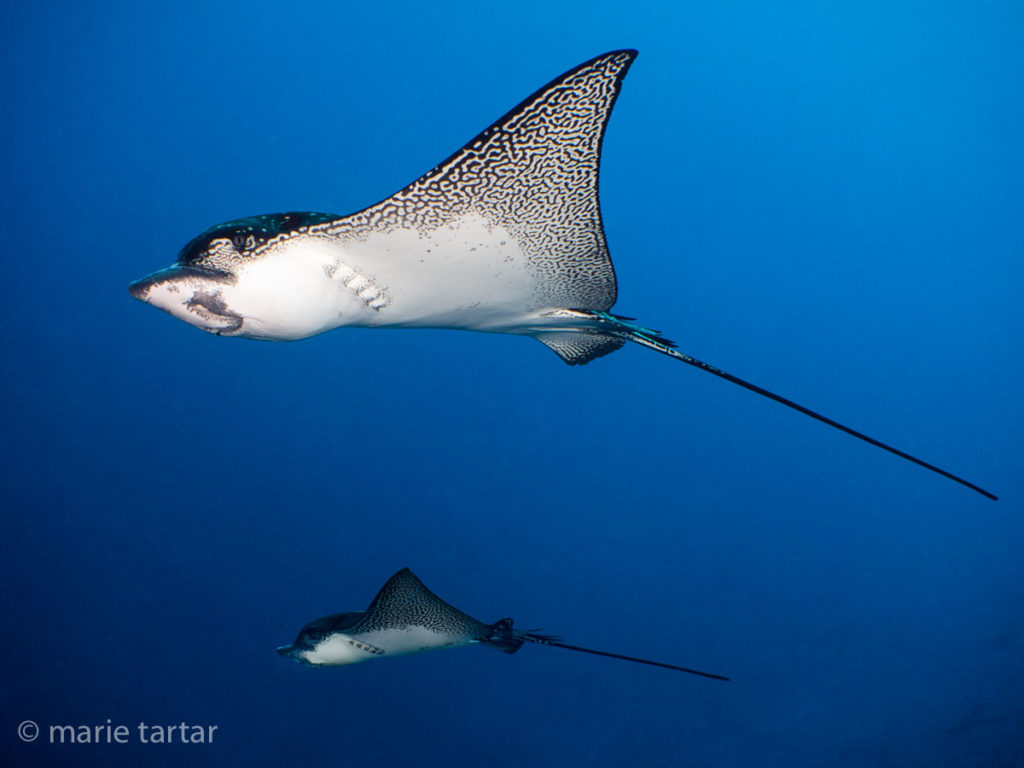
Graceful spotted eagle rays joined the parade of sharks on occasion (Fakarava, Tuamotos, French Polynesia).
The diving in Fakarava was incredible! Legions of sharks, especially gray reef and black-tip reef, continuously streaming in mind-boggling numbers and proximity.
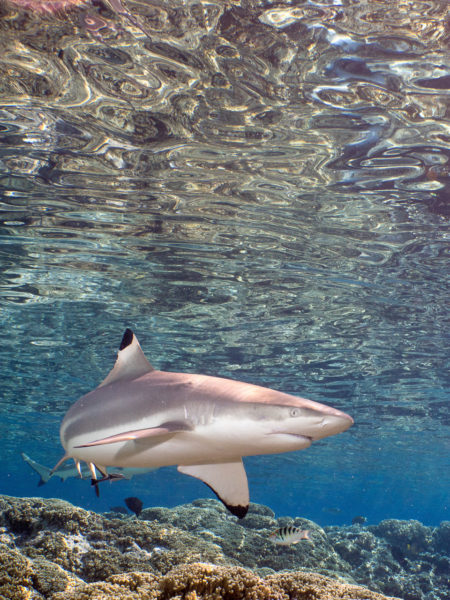
Blacktip reef sharks circle the shallow pool at Tetamanu Village, Fakarava Sur, Tuamotos, French Polynesia.
We divided our time between Fakarava Sur and an adjacent atoll, Kauehi. I don’t know which shark experience was more astounding: the river of sharks in the channel in Fakarava Sur or the spiraling circus of sharks circling around a hole in Kaeuhi. As the days passed and the full moon approached, more and more groupers accumulated in both places: camouflage-colored females tucked into crevices in the reef, on the sand and in the lower water column, all facing into the current, suspended, awaiting some approaching biological signal to disgorge the eegs that bulged their abdomens. The pale males generally hovered higher, perching atop coral formations, at the ready to contribute their sperm.
The hard coral gardens themselves were healthy and beautiful, with schools of snappers and an array of lovely butterflyfish to oogle.
Groupers galore: French Polynesia, June 2018 (Part 2-Fakarava)
When we finally disembarked our Internet-free catamaran home for a couple of days on the island of Tahiti before heading home, we reemerged into the land of Wifi to find the world transfixed by a subterranium drama of epic proportions, namely the Thai soccer team and their young coach trapped deep in a flooded cave in remote reaches of northernmost Thailand. Once we learned the situation, we, like the rest of the world, were riveted by the daring and difficulty of the diver-led rescue.
July:
Back home on the Tuesday before the 4th of July holiday, we had an unusually quick turn-around: Home from LAX at 2 pm, a rental underwater camera to ship back to Florida, a hair appointment down in Hillcrest at 4 pm and packing for a long weekend in San Miguel de Allende (SAM) in central Mexico. The following day started early, with a 5:30 am pick-up for our first traverse of the new CBX “walk across the border” option to travel from Tijuana non-stop to SMA. My sister Clarissa and brother-in-law Jason were already there. Traveling with us was Jason’s mother, Claire. This back-to-back trip came about when I received a “use it or lose it” email from Robert, with whom we were house exchanging. He and Maria had stayed in our house in Sedona 2 years before and they were thinking of selling the house in SMA. I had until July to use the exchange .
On the flight down, Steve and were lucky enough to have a row of 3 seats to ourselves. We took turns taking naps, resting our heads on the other’s lap. I started a book Steve had downloaded called Less by Andrew Sean Greer, which had me laughing so hard (and my abdominal wall moving as a consequence) that I thought I would wake him up.
We had a chance to meet Robert and Maria in person, as they were staying next door. We saw a lot of SMA resident Kathy, Claire’s friend from Spanish class in Syracuse, who Clarissa, Steve and I had all met before on prior trips to SMA. Kathy led us to our favorite meal of our stay, Nicasio, including addictive homemade tortillas. We managed to fill in many gaps left after our prior Dia de los Muertos focused-trip, working in a walking tour around El Centro, catching Gil Guttierez playing at Instituto Allende and making the trip out to the “Sistine Chapel of North America”, Atotonilco. Steve, Claire and I enjoyed a visit to Galería Atotonilco with a leisurely lunch nearby.
Back home, my Wednesday night Spanish class through film with Carmen began with Tambien La Lluvia (Even the Rain), a film set in Bolivia in which a film crew recreating the colonization of the Indians by Christopher Columbus, encounters current day struggles of the indigenous population in the infamous “water war”. From there, we progressed to El Crimen del Padre Amaro (starring Gael Garcia Bernal, who I adore!) as a young priest with a most unsteady moral compass. We finished with two classics, Volver by Pedro Almodóvar and El Laberinto del Fauno (Pan’s Labyrinth in English) by Guillermo del Toro.
I had so enjoyed reading Pachinko earlier in the year, that I was happy to re-read it when my book club selected it based on my recommendation for our July meeting at Annasue’s house.
August:
August was notable for a long awaited visit from Yoshi (my Japanese cousin Toshiko’s husband) and Kenny (their oldest child). This occasioned our first trip to see the San Diego Padres playing in Petco Park. The motivation for their request was the prospect of seeing the “Babe Ruth of Japan”, Shohei Ohtani, play. As he suffered an ulnar collateral ligament injury before their visit, it looked like we were not going to see him play. Luckily, it was tied after 9 innings, leading to a 10th, when he came up to bat and scored a run. Armed with a “professional lens”, I risked a few shots.
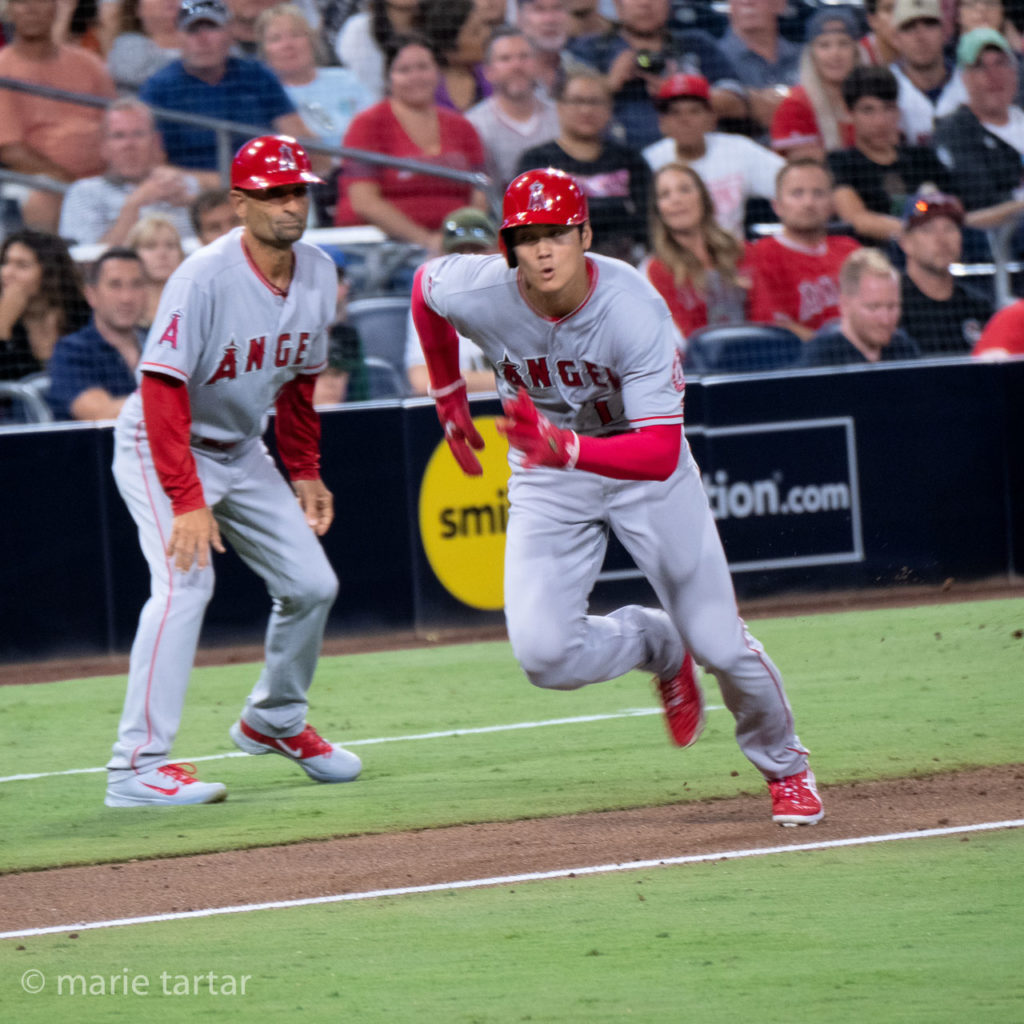
The “Babe Ruth of Japan”, Shohei Ohtani, is all determination, driving toward home to score one of several tie-breaking 10th inning runs as the Los Angeles Angels triumphed over the San Diego Padres.
I wrote it up for Photo Focus here:
When Yoshi and Kenny headed up to Santa Monica, we flew to New York for the rest of the week, which saw us venturing into New Jersey to pick up a new Tufenkian rug (Barbara Barry’s Moondrops). We also had a chance to preview Ron and Lucille’s new apartment in the fabulous Zaha Hadid sculpture of a building near the Highline, with architect Jennifer, enjoying a meal together at The Red Cat, which sadly was slated to close at year’s end. Theatrical highlights included two classics (My Fair Lady and Carousel) and a contemporary play Straight White Men.
We had a long enough weekend to make a quick trip to Sedona, during which we made our first road trip in “Ely”, our new-to-us but not-very-new Honda Element, to Ship Rock and Bisti Badlands in northwest New Mexico. Our soundtrack for this quick overnight trip was re-listening to This is Where I Leave You by Jonathan Tropper, which had us laughing almost to the point of crying on our first read. A dysfunctional family with 4 grown siblings finds themselves under the same roof again when their father dies and they sit shiva. Steve had recently made a shiva visit (the same night as my Spanish class) on the sad occasion of the recent death of a warm, funny, San Diego art scene stalwart, Lew Klein. Since everything we know about sitting shiva we learned from This is Where I Leave You, Steve had encouraged me to head down to Banker’s Hill the following night to pay my respects, although there had been no mention of more than one night of shiva observance on the announcement. So, after a long work day, I spent an hour in traffic to find myself down at Lew and Marni’s house with no one there. Steve had said it was traditional to leave the door open. The gate was unlocked, as expected, but no one responded to the doorbell. I called Steve on the phone to query him more closely. He said: “Well, I heard people saying See you tomorrow.” I struggled to keep from shouting: “They could have been out of town guests making breakfast or lunch plans!” Cursing Steve, I left a card in the mailbox and headed home. I am quite sure Lew would have thought this was hilarious.
September:

Two spot octopus in a bed of purple hydrocoral, a signature of advanced Catalina Island dive, Farnsworth Bank.
We finally made it back into cold water over Labor Day weekend, on the Magician out of San Pedro. After procuring a new drysuit (requiring 3 trips to the dive shop to order it, try on a too big one and to pick up a smaller one), I overtrimmed the neck seal in my hurry and ended up having to dive in a wetsuit after all, somehow managing 9 dives in 3 days. Even in the 60 degree water, it was wonderful to be back in a kelp forest. This was my first trip with my new underwater camera, a Panasonic GH5 in a Nauticam housing with a WWL-1 (wet wide lens). I test-drove a rental version of this rig in French Polynesia. We spent 2 days at San Clemente Island and a final day at Catalina, including 2 dives at the famed backside pinnacle, Farnsworth Banks.
Finishing The Signature of All Things: A Novel by Elizabeth Gilbert allowed me to vicariously visit Tahiti again, as a 19th century botanist named Alma Whittaker attempts to understand her mysterious husband by traveling to the place where he died.
In September, we had back-to-back weekend photographic art events. Back in May, Steve gave a talk at UCSD for their Arts and Medicine series entitled Creating the Narrative in Medicine and Art, which was very well received and attended. The request to speak had come from Larry and Debby Kline, who teach a drawing class for medical students at UCSD (you read that right, I think medical school may be kinder and gentler than in our day). We divided up responsibilities-I pulled together a presentation on our behalf for the San Diego Radiology Society the month before while Steve drew this talk. He showed a work in his talk, a near-life-size image based on a scan of a 25 cent plastic water bottle of Our Lady of Lourdes he bought at an estate sale. The first version, in our powder room, I had dubbed Our Lady of the Bottle. Larry and Debby were curating a show for SDAI (San Diego Art Institute) later in the year, entitled Beyond the Age of Reason, looking at how contemporary artists approach religious themes and imagery.
For the show, Steve created a more lavish version, complete with gilt Latin script describing these events, which received some nice press in several articles, including San Diego Jewish World and the La Jolla Light. The reception was on a Saturday and drew a wonderful mix of friends from all slices of our lives, as did the following weekend’s main event, speaking to the San Diego Sierra Club’s Photo Section. We drew on the past year of image-making in a talk with the all-inclusive title of Up, Down and Around the World.
October:
On Steve’s 61st birthday at the end of September, we flew to NY for 2 weeks. The first was spent in the city, seeing plays and dance performances. Sarah met us for Steve’s birthday dinner at nearby Drunken Munkey. The Indian food and craft cocktails were the perfect antidote to a day of air travel.

Monkey business for Steve’s 61st birthday in NYC-good food and cocktails and nice vibe at Drunken Munkey near the apartment!
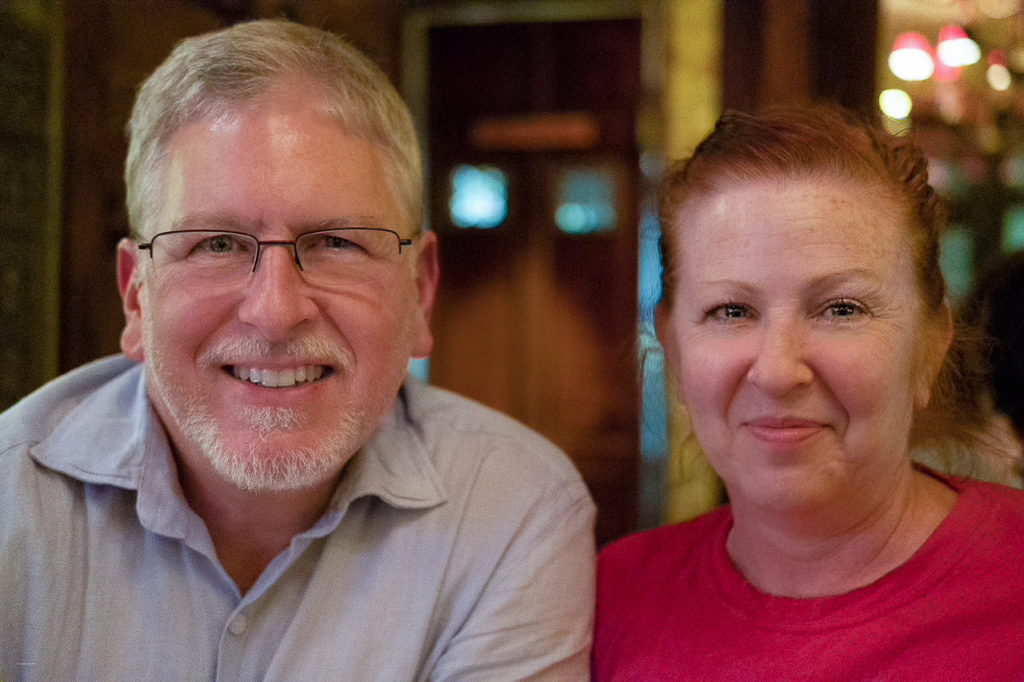
Celebrating Steve’s 61st birthday at Drunken Munkey: Steve’s youngest sister Sarah always knows the good places to go!
On the plane, I started a TV series Steve had been raving about, The Marvelous Mrs. Maisel, set in 1950s New York, about an aspiring stand-up comic. I was so hooked by the end of first episode, I was standing in the aisle after landing, waiting to disembark, with headphones still on, trying to see the end. We polished off the series, an episode or two a night, back in the apartment while winding down from the evening’s entertainment. Our friends Lenny and Arleene were responsible for most of these recommendations, with Clarissa filling in the few open evenings.
On Sunday morning, klezmer music filtered in through the windows. I followed it down the street to Lexington and found a stage set up for the 92cd Street Y annual street fair. As we headed to Brooklyn via the subway on 96th Street, I saw queued up off the stage a group of male musicians in familiar baby blue band uniforms: yes, from The Band’s Visit, which we had loved the fall before.
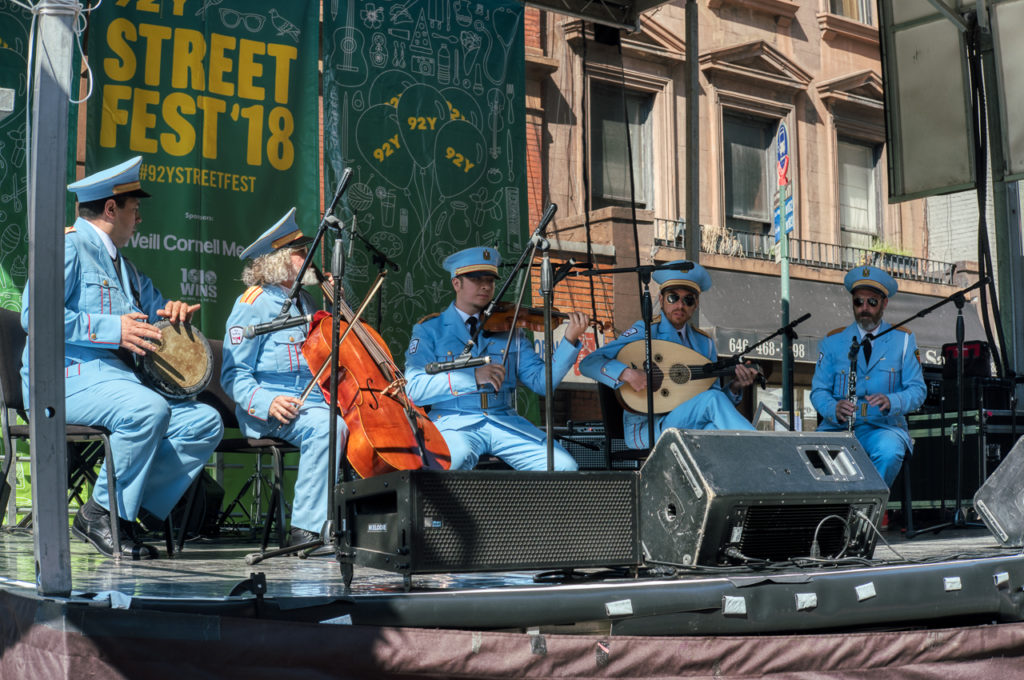
A well-timed trip to the subway enabled us to catch these dignified musicians from The Band’s Visit, performing at the 92cd Street Y annual street fair.
The rest of Sunday was Ethiopian-themed, spent in Ft. Greene Brooklyn with Lenny and Arleene seeing the shape-shifting Kathryn Hunter bring to life a bevy of former male servants of Ethiopian dictator Haile Selassie in The Emperor at TFANA. She was accompanied by Temesgen Zeleke playing the krar (Ethiopian lyre), as well as embodying student demonstrators. Being on vacation, we even stayed for the talk-back afterwards, before heading down the street for an excellent Ethiopian meal at Batí.
Lenny and Arleene were also responsible for the following evening’s entertainment, as a chance conversation had enabled me to snag tickets for the inaugural performance of this year’s Fall for Dance series. Clarissa and Jason joined us for the performance, while Alec and Martha (in town long enough to take in the Armenia! show at the Met) saw The Waverly Gallery. After a series of misunderstood texts, we managed to convene at The Modern at MOMA for drinks and snacks beforehand.
The first program of Fall for Dance was phenomenal. Fall for Dance is essentially a prestigious dance showcase, with dance companies presenting short works. Our program featured Boston Ballet dancing to Bach Cello Suites and New York City Ballet principal Sara Mearns in a solo tribute to Isadora Duncan in the first half. As if that wasn’t enough, the second half was electrifying, beginning with Caleb Teicher & Company performing a world premiere tap piece called Bzzz, accompanied by the beatbox vocals of Chris Celiz. The final performance was an amazing display of raw male physicality, presented by Algerian Hervé Koubi and his company of North African male street dancers.
Steve and I spent a pleasant and instructive afternoon at Phillips Auction House, previewing photographs and artwork to be sold later in the week. Clarissa and I met up at night to see a 3 woman piece with a local connection-our friend Lev’s lighting designer daughter Masha worked on this production of Stefano Massini’s An Intractable Woman, about the life and work of murdered Russian journalist Anna Politkovskaya. Her uncompromising focus on illuminating uncomfortable truths during the Second Chechen War apparently made her too dangerous.
It wasn’t all fun in NY. We spent a morning touring The Lott, an assisted care facility at the northeast corner of Central Park, as a potential future home for Mama.
During our second week in NY, we did a road trip. The original plan had been to go to Vermont for the fall color, completing a house exchange with friends Jim and Nerissa. We met Jim when he screened his wonderful semi-autobiographical film Coming Through the Rye at the Sedona Film Festival a few years before. Unexpectedly, he accepted a one year post as a film professor in Savanna, so their house would be rented. We decided to retool and make a long overdue trip to visit Steve’s sister in Buffalo. I had never been to western NY and for Steve, it would be a trip down memory lane (he went to graduate school in Buffalo before med school).

A stream-side scene in Watkins Glen State Park. The area was once home to an early grand prix style car race.
We had a great time. Sarah and Aaron loaned us their Element, which is a great vehicle for a photography trip. Steve had upgraded the drone to the more travel-friendly sized Mavic Pro. Our first stop was in Ithaca, where we glamped for the night near Buttermilk State Park, dining at the legendary Moosewood Cafe. Other highlights included a visit to the Corning Glass Museum, touring two fabulous Frank Lloyd Wright houses in Buffalo with Susan (both owned by the Dwight D. Martin family) and visiting our friend Roz in Bovina on our return.
From New York, I headed to Arizona for the weekend, catching up with friends from high school at my 40th high school reunion. Almost all of my closest friends were there and it was wonderful seeing my friend Jill’s family again as well.
The following weekend was not much fun. We spent 4 days in DFW visiting Mama. Although the plan had been for Clarissa and Jason to rendezvous with us, Clarissa ended up hospitalized for a dense pneumonia. While I spent a nice evening with Mama looking through her girlhood photo albums and adding English names to the Japanese captions against the day Mama won’t be available to narrate these pictures, her severe short term memory deficits were scarily on display during the weekend. She seemed to have difficulty mastering the single on-off switch on a new electric tea kettle Fumie brought over as a gift. At our final meal together, empanadas at Empa Mundo, she asked at least 3-4 times what empa and mundo meant. I did manage to establish online access for most of her holdings so I could oversee her finances better. We went through 3 closets and took a trunkful of no-longer-worn skirts and silk blouses to the thrift store. Steve installed an auto-on light at the front door. My impression that it was time to move her into a facility with more oversight strengthened.
The following weekend was a reprieve. Nancy and Gerry drove out to spend a long weekend with us in Sedona. Our timing was close to the peak of fall color, with golden aspens in Flagstaff and pinks and oranges enlivening perennial favorite West Fork of Oak Creek Canyon. Along the way, we introduced each other to new favorite TV shows (The Marvelous Mrs. Maisel and the Santa Clarita Diet) and took in a pre-Halloween film of Frankenstein from the National Theater in London, with Benedict Cumberbatch as Victor Frankenstein and Jonny Lee Miller as his creation. Gerry put his very capable Toyota truck through its paces over the rocks, ruts and dropoffs of Schnebly Hill Road.
November
Clarissa recovered enough to be able to come to San Diego as planned with Jason. They joined Vivian and me for a provocative Sunday afternoon at San Diego Repertory seeing Anna Ziegler’s Actually. Amazing how an issue with many nuances, sexual consent, can be animated on a virtually empty stage, on the strength of excellent writing, brought to life by 2 excellent actors ( Emily Shain and DeLeon Dallas) as Princeton students Amber and Tom. Their initial attraction leads to a sexual encounter which starts consensually but proceeds into uncomfortably ambiguous territory.
We made a foray into southeast San Diego, south of Lemon Grove, to check out a very small assisted living facility owned by a live-in couple, including a Japanese woman. Clarissa and Jason also made the trek up to Del Mar to see a boutique assisted living facility I had toured previously, La Vida del Mar.
Mid-November found us in New York again, experiencing late brilliant fall color in Central Park and transient, snowy winter splendor just days later. We overlapped a Saturday with Ralph and Gail, just long enough to enjoy with them Harvey Fierstein’s Torch Song, with Michael Urie hilarious, poignant and captivating in the role of Arnold Beckoff, a gay drag queen who wants what everyone wants, to be loved and respected. I really enjoyed his comic timing the prior year in The Government Inspector. Mercedes Ruehl appeared in the 3rd play of the trilogy as Arnold’s exasperated and unintentionally domineering mother. I may have been unconsciously channeling her in my selection of outfit for the evening: red pants, black turtleneck, black lamb swing jacket, red hat and leather gloves, black boots. I last saw her in a one-woman show Full Gallop at the Old Globe as Diana Vreeland (Vogue editor known for her all-red living room). She was Michael Urie’s match for comic timing and biting commentary. Hunky Ward Horton ably played Ed, a lanky teacher with whom Arnold becomes involved. Jack Difalco played David, a mouthy gay teenager Arnold is adopting in the final play.
The weekend was rounded out by spending a gloriously crisp fall afternoon with Sarah and Aaron. After a very satisfying Cajun brunch at 1803, we walked across the Brooklyn Bridge and back via the Manhattan Bridge, taking in a wonderful Japanese antique store in DUMBO along the way, Shibui, where we learned about antique Japanese fire fighter outfits from owner Dane.
Sarah and Aaron left us off at the Museum of Jewish Heritage at the foot of Manhattan. It had been years since we were there, when Steve’s parents were still alive. Our tickets to the evening’s performance of Fiddler on the Roof in Yiddish included entry into the museum. This Joel Grey-directed production, the first presentation in the US of the 1965 Yiddish translation by Shraga Friedman, had been extended 4 times, finally enabling me to score tickets.
This was a minimalist but rich production, presented with Russian and English supra-titles, with the set a series of parchment panels, one with Torah embossed on it in Hebrew. It’s strange how familiar a work can be, yet still be so full of surprises. I thought I knew the story, having grown up with the music, but didn’t realize almost all of the famous songs I knew were in the first half. From Sholem Aleichem’s original stories of Tevye the Dairy Man came the story of a poor Jewish milkman, Tevye, who with his 5 daughters and wife, lives in a small settlement in Russia in Czarist times in 1905.
Broadway veteran Steven Skybell was a terrific loving, exasperated Tevye, whose religious faith is tested by his daughter’s emerging independence and developments in the political landscape which threaten the Jew’s continued presence in Russia. Our viewing of this Fiddler was just two weeks after the horrific anti-Semitic shooting attack in Pittsburgh at theTree of Life Synagogue. Instead of the seasonal pitch for Broadway Cares, for this evening’s performance, the cast was collecting for Tree of Life Synagogue survivors.
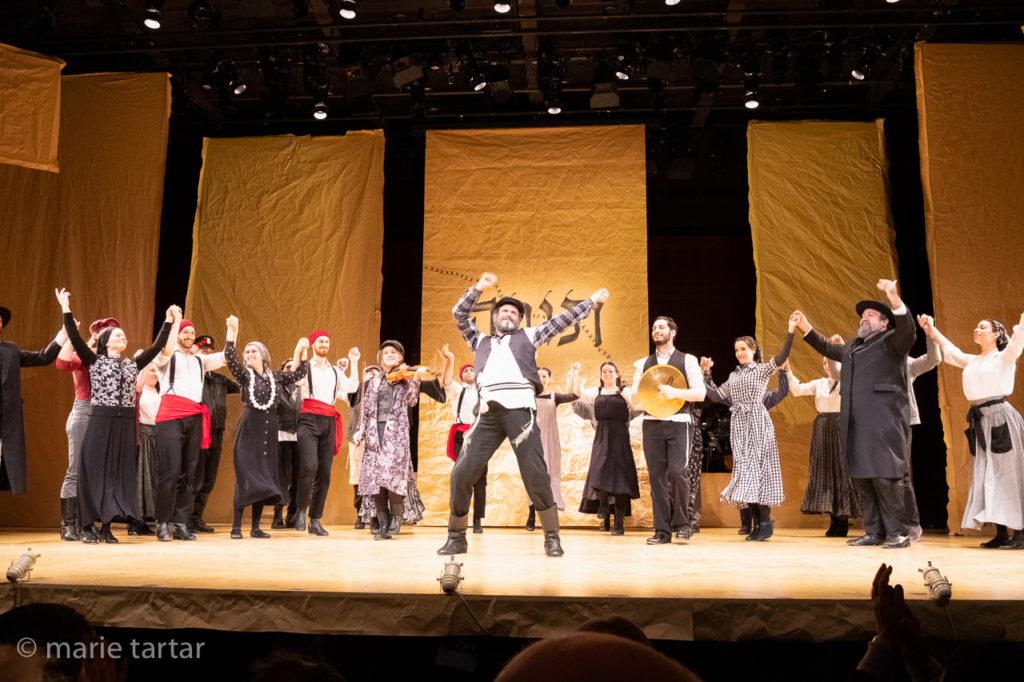
A simple set, a spirited production, Fiddler on the Roof in Yiddish, with English and Russian supratitles.
We were surprised to find our GPS locating us in the waters offshore when we tried to call an Uber from inside the warmth of the building. Was this our GPS location scrambled as a security precaution, we wondered, as we shivered outside waiting for the car we managed to hail once out on the frigid street .
Just a few days later, we were astonished to read about an anti-Semitic outburst, with a man shouting ““Heil Hitler, Heil Trump” during intermission of a Fiddler on the Roof production in Baltimore.
Monday was a “day off” from theater. We met up with our San Diego friends and Upper East neighbors Lenny and Arleene, and their friend Sue, at the Park Avenue Armory for the Salon Art + Design show, where we gaped at gorgeous and pricy furniture, ceramics and collectibles for sale by dealers from all over the world. We headed downtown to IFC to catch an astounding Swedish film, Border, starring Eva Melander as Tina, an unusual-looking woman working as a border guard, with a highly developed sense for depravity and guilt. Her encounter at work with a similarly distinctive man (Eero Milonoff ) leads her to question her origins. Sarah and Aaron met us for pizza at nearby Arturo’s, a favorite of ours for decades.
The Lifespan of a Fact was based on an actual article vs. essay (journalism vs. literature) by writer John D’Agata (portrayed by Bobby Cannavale) and fact checker Jim Fingal (played by Daniel Radcliffe). Cherry Jones was the third leg of a strong trio of actors, as the editor of a magazine on the eve of publication of a piece by D’Agata about a teenager’s suicide by casting himself off a building in Las Vegas. Assigning young Jim Fingal to fact check the piece unleashes a tug-of-war and sets off a debate about the mutability or necessity of truth in reportage. This was our first time in Studio 54. I was prompted to schedule this by the topic, which sounded timely in an era of “alternative facts” and on the strength of the cast. In recent years, we had admired Cherry Jones as the mother in The Glass Menagerie and Bobby Cannavale as a fast-talking salesman in Glengarry Glen Ross.
Our Wednesday matinee theatrical outing was the highlight of the week in a week of exceptional theatre, with Bryan Cranston as TV anchor Howard Beale in an Ivo Van Hove-directed, National Theater production of Network, based on the Academy Award-winning 1976 film.
Our final theatrical outing of the week, The Waverly Gallery, capped a Thursday notable for a fierce but brief freak snowstorm, which transformed autumn leaves on the streets and in Central Park into a magical snow palace in a matter of minutes, only to melt later the same day. We bagged a planned trip to the Cooper Hewitt at the entrance, in favor of a quiet and transformed Central Park across Fifth Avenue. It was wonderfully serene and the least occupied I’ve ever seen the park.
The legendary Elaine May was brilliant as Gladys Green, who progresses deeper into the depths of Alzheimers, as her family (Joan Allen as daughter Ellen, David Cromer as son-in-law Howard and Lucas Hedges as grandson Daniel) and the audience watch helplessly, aghast. David Cromer won a Tony award for best musical director for The Band’s Visit, which we loved the prior fall. Arrested Development‘s Michael Cera played Don, a painter newly arrived in the city, whose work Gladys shows in her little-visited Greenwich Village gallery, which serves mostly to keep her occupied. Thematically, it was painfully close to home.
While in New York, I had wanted to see Kore-Eda’s new film, Shoplifters, but was disappointed to learn it wasn’t opening in the US until the following week. Much to my delight, we caught it early at MOPA, on the last day of the San Diego Asian Film Festival. Brad and Lauren joined us. We made it an all Japanese evening, with dinner following at Kaito.
Thanksgiving week was a delightfully short work week for us, as we’d both arranged to be off the day after, as well as the following Monday and Tuesday, giving us a wonderful string of 6 days to head to Sedona. Miles and Tatiana joined us for the weekend, a belated wedding anniversary celebration. It was a weekend balanced between introducing them to the area and relaxing at home. Tatiana is also a film buff, so we had a willing companion for a miniature film festival. Steve and I watched the 2015 film Room before their arrival, a harrowing tale of a mother and child held captive in an underground shed. Brie Larsen won a Best Actress Academy Award for this role.
Our film festival included an outing to the Mary Fisher Theater for a screening of Wildlife, a 2018 film directed by Paul Dano, starring Carey Mulligan and Jake Gyllenhaal as parents of a teenage son (Ed Oxenbould), who is witness to the inexorable dissolution of his parent’s marriage in a small town in Montana in 1960. At home, we screened a new release and a classic. The new release was The Ballad of Buster Scruggs, by the Coen brothers, released simultaneously in theaters and on Netflix. This was a suite of short films set in the very wild Old West, an amalgam of lyricism and shocking violence. The classic was the 1966 film Blow-Up, starring David Hemmings as a dissolute mod young fashion photographer who may have unwittingly captured a murder on film while shooting a tryst in a park. Our final selection was the 1976 classic Network, which won Oscars for screenplay for Paddy Chayefsky, and acting statuettes for Peter Finch (as anchorman Howard Beale, whose on-air ranting sends ratings soaring) and Faye Dunaway as an ambitious young TV producer who repackages Howard into the “mad prophet of the airwaves”.
For Miles and Tatiana’s first visit to Sedona, we struck a balance between cooking at home (Ottolenghi’s Salmon with Thai Basil and Browned Butter) and sampling the local culinary highlights (Indian Gardens, Diablo Burger and Che Ah Chi at Enchantment). We walked a few of the calories off by hiking to the sinkhole from the house (Tatiana’s longest hike ever) and strolling through the volcanic moonscape of Sunset Crater. After they headed home, Steve and I tackled a more ambitious hike up Oak Creek Canyon, the North Wilson Mountain Trail. I thought it was our first foray up this steeply-climbing trail, so was surprised to find notes in my handwriting in my guidebook back home from years back. There was still fall color, including bright yellow aspens, along the way and up canyon.
December:
The repose we’d achieved during our Sedona stay was quickly undone in a frenzy of packing, as we had a quick turn-around (3 work days) before taking a red-eye to Miami to catch 3 flights to hopscotch our way to Little Cayman, the smallest and least populated of the Cayman Islands. We were enrolled in Bootcamp: Intermediate-Advanced Lightroom and Photoshop Bootcamp with Erin “Go Ask Erin” Quigley. The mornings were devoted to 2 dives, the afternoons spent in the classroom learning more post-processing techniques. I knew I had turned a little corner-an Erin “aha” moment-when I successfully composited a better eye onto an iguana shot from the trip on the plane ride home. Even more, when I composited Erin herself into the window of Randy’s Gazebo-Erin claims she didn’t even notice it was composited!
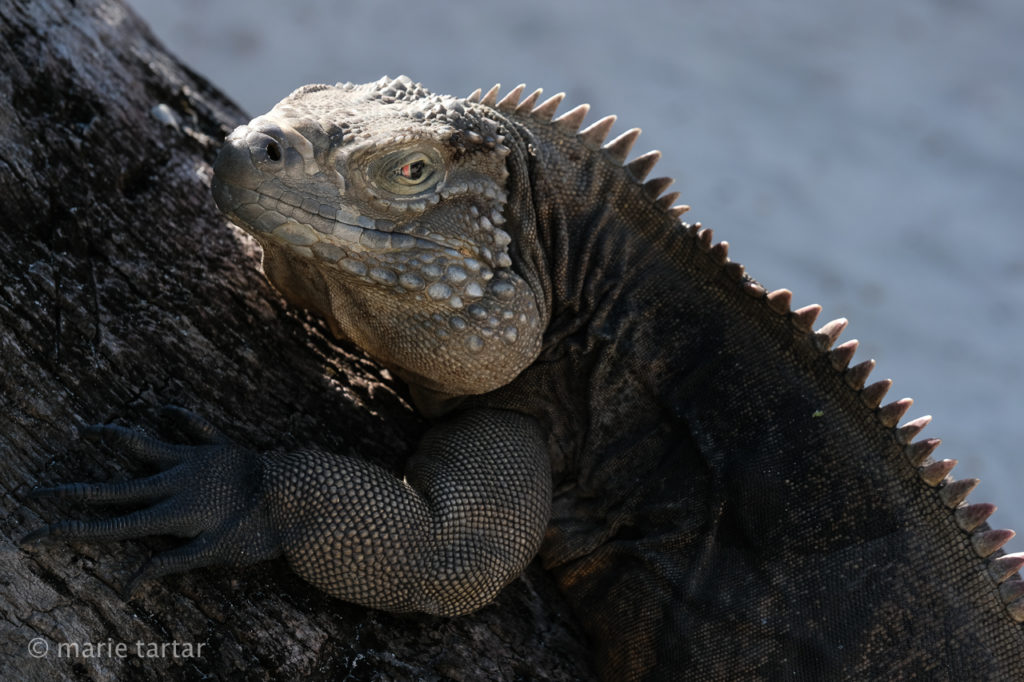
My first solo composite (a better eye onto a better body position); this iguana was outside our Lightroom classroom at Little cayman Beach Resort.
Some of the enforced leisure time on plane rides was devoted to listening to a new musical obsession-the 2016 cast album of Hadestown. By the time we arrived in Little Cayman, I was a full-blown Anaïs Mitchell fan and wondering how I could connect with a producer and get involved/invested in this reimagined Orpheus and Euridyce tale. To my surprise, email inquiry turned up a connection through my friend Wendy, who was already invested in the show. During the preceding months, I had read scripts, watched rehearsal videos and considered investing in Beetlejuice, Be More Chill and Diana, all in various stages of development for future Broadway debuts. All of these projects were intriguing, but I wasn’t feeling it. I first heard about Hadestown 2 years before from Mayde, whose daughter Phoebe provided a connection with Anaïs Mitchell’s and Hadestown’s Vermont roots (via Middlebury College). “The next Hamilton” was her assessment, I hoped she was right.
December’s bookclub was neatly fitted between our return from Little Cayman and my trip to DFW the following weekend, meeting up with Clarissa and seeing Mama . Annasue hosted and was the source of the recommendation of Little, an imagined historical fictional account of the life of the orphan girl who becomes Madame Tussaud.
I rendezvoused with Clarissa the following weekend in DFW, a weekend focused on checking up on Mama. After an enjoyable afternoon hearing her stories of growing up in rural Japan and attending college in Gifu, we shared an African meal at African Village Cafe. This was my first foray with fufu, a Western African starch staple cassava, formed into an ovoid ball after being boiled and mashed, a solid and filling neutral foil for the rich okra beef stew I selected.
Sunday’s task was a scheduled trip to Costco in Lewisville, to the hearing aid center. Mama had lost one of her hearing aids months before and was in dire need of improved hearing. I was pleasantly surprised to find I could buy them without obtaining a membership for her.
After a nice lunch at Cafe Modern at Fort Worth Museum of Modern Art, Clarissa headed to the Kimball for the Black and White shows Steve and I had enjoyed in October, showcasing Balenciaga’s couture wear with Goya’s drawing and prints. Mama and I stayed at the Modern for the fabulous permanent collection, as well as a small show of the work of a Nigerian artist (now living in California), Njideka Akunyili. Upstairs was a huge retrospective of photographic feminist artist Laurie Simmons.
We met Fumie and her daughter Misa for dinner at Our Place, an Indian restaurant we like from prior visits, which is quiet enough that Mama has a chance of hearing some conversation. While I was at Costco, I had received a forboding text from Steve labelled “Beauty and Disaster”. The accompanying photo showed the Audi Q5 mired in thick mud. His plan to shoot the meteor shower reflected in the water of the Salton Sea went horribly awry, with the car mired hopelessly in concrete-like mud. His efforts to dig the belly of the car out, lying flat on a yoga mat, scooping heavy handfuls of mud, gave him tendinitis and a swollen hand, but the car would not budge. A call to an Arco station yielded the number of a local man with the winch and vehicle necessary to extricate the car from its muddy mire. He wouldn’t come until daybreak lest he be imprisoned as well, but showed the next morning and $200 later, the car was freed, covered with mud and with a new shimmy, but free. Cleaning up the car required jacking it up to powerwash the undercarriage.
Meanwhile, our forensic financial unravelling of Mama’s affairs continued. Reviewing bank statements led me to the conclusion that she had a safe deposit box. Despite repeated searches, we hadn’t turned up the title to the car. A safe deposit box seemed a good candidate but Mama said no, she didn’t have a safe deposit box. At the bank, it was confirmed-she did have one, established in 2009, by Mama, only visited that one time, to open it. None of the keys we brought were right. The search goes on…
I had an unpleasant encounter that evening. Actually, two, both with rats, one grey and furry, one human. The room off the garage showed lots of rat feces, clear evidence of an ongoing problem, despite extermination. When I opened the door to show Mama, a large grey furry streak startled me and I screamed my best blood-curdling cry and slammed the door shut.
The second incident was after dinner. Clarissa and I went down to Dallas to Trinity Groves to Beto and Sons, a Mexican restaurant owned by father and son chefs who she saw battling Bobby Flay in a cook-off on TV when she was hospitalized earlier in the fall. After a yummy meal (green pork enchiladas for me and chile relleno noodle dish for Clarissa, with a side of elote and fireball margaritas), we had so many leftovers that we called Mama to tell her we would swing by to put them in her refrigerator (one deficiency of the NYLO). I left Clarissa at the driveway to run the food in and turned the car around in the circle. As I did, I saw a shadowy figure lurking near Mama’s side yard. The gait told me it was her predatory neighbor, Ron. Two days before, I had left him a cease and desist letter on Mama’s door, written by Mama’s attorney. We knew he had picked it up, thanks to the Ring doorbell video Steve had installed earlier in the year.
After Clarissa rejoined me in the car, we pretended to leave, cruising slowly past Ron hovering in front of the house next door, seeming to be waiting for us to leave. We went around the block and returned, parking a few doors short of Mama’s, facing the house. He continued pacing back and forth in front of the house next door, apparently aware of us and waiting us out. We called the police, who arrived within minutes. While we were conversing with Officer Johnson, he disappeared.
As the year came to a close, I toured yet another assisted care facility, Seacrest Village, which seemed perhaps the best fit for Mama, having an independent living option. We were again packing for a cold weather destination: Antarctica! Yes, we can’t get enough of white landscapes and polar light. This voyage would be Nancy and Gerry’s first trip to the White Continent. Our butler/roomie Greg would be joining us, and we were looking forward to experiencing Buenos Aires for the first time. We finished Santa Clarita Diet, a hilarious undead sitcom. I enjoyed finishing a book set in Hokkaido and Tokyo, where I started the year, titled Audrey Hepburn’s Neck by Alan Brown. This book of fiction was an interesting portrayal of Japanese-American relations, with a serious undercurrent informing the character of Toshi, a young man with silent and mysterious parents, who moves to Tokyo, where he dates and befriends several Americans.
For Hanukkah, Steve arranged 23 and Me tests for us. Surprise: I learned I am half-Japanese and half-European (British and Irish, followed by French and German). I laughed to read that my genetic muscle composition is uncommon in elite power athletes-that explains a lot! While procrastinating about packing, we watched Alfonso Cuarón’s black and white elegiac Roma, appearing on many Top 10 Films of the Year lists. This contrasted with a gritty Luis Buñuel film from 1950 set in Mexico City, Los Olvidados, suggested by our film buff friend Joe as a fitting companion piece.
At the end of the year, we attended La Jolla Playhouse’s seasonally appropriate world premiere offering, Lindsey Ferrentino’s The Year to Come, which depicts a yearly New Year’s family gathering in a Florida backyard, progressing backwards through time to uncover the evolution of this family’s relationships and source of their familial lore. This family, like most, is a messy mix of affection and disdain, divided by deeply-held political affinities, yet united by…what? Shared background and experiences, genetics…how is it that the people who know you the best are also the ones most likely to infuriate? Somehow, spending more time on family matters and with family members than usual, learning about my genetic imprint from 23 and Me and it being that time of year which prompts reflection combined at year’s end to plunge me into a pensive mood, eager to escape for a while, to clear again my head in nature, looking forward to fields of penguins as far as the eye can see and sublimely beautiful icy landscapes in Antarctica in the new year. Days before our departure for Antarctica, an astounding coast-to-coast endurance race across Antarctica was decisively won by a 33-year-old American, Colin O’Brady, who finished his 54-day unsupported ski traverse of the White Continent in an ultra-marathon type 32-hour finale. His opponent in this super-human effort was 49-year-old Englishman Louis Rudd. This amazing feat was a good reminder that there are still records to be broken and explorations to be made of of yet uncharted territory. Onward to 2019!
Finally, our best and worsts of 2018:
Worst moment (Marie): Maneuvering around a hotel room in Hokkaido, Japan, packing to travel to Kyoto, with a sprained ankle and a racking, leave-a-lung-on the-table cough, I leaned over a low table to heat water for tea, when I coughed at the wrong moment and sent my back into agonizing spasm.
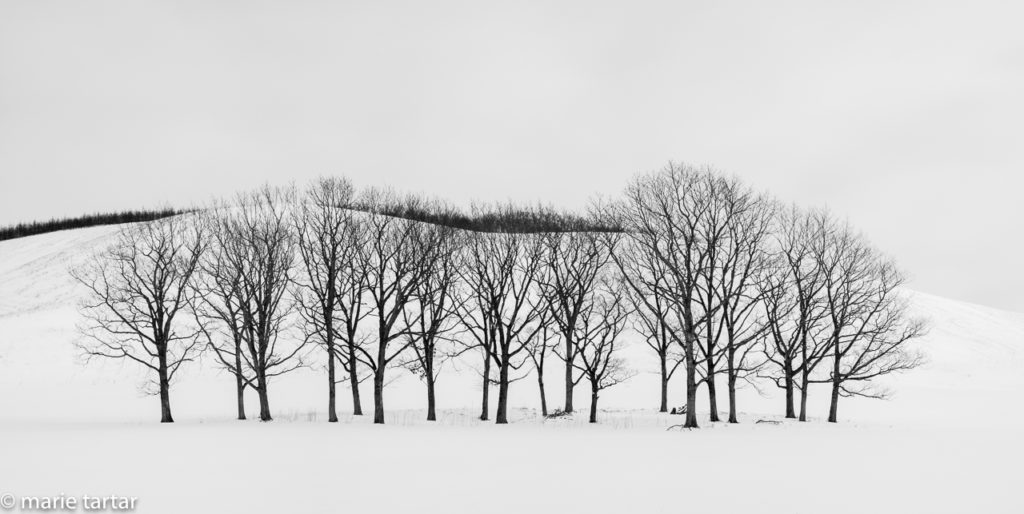
Despite being utterly miserable physically at times during this trip, I loved the snowy landscape of Hokkaido in winter-so much so, we’re signed up to return in 2020!
Worst moment (Steve): Trying to dig the undercarriage of the solidly-imprisoned Audi Q5 out of a quagmire of mud near the Salton Sea, lying on the ground, scraping fistfuls of mud out from under the car with bare hands, all to no avail and having to spend the night in the car as the December temperature plunged.
Best book (Marie): Hand’s down, Min Jin Lee’s multi-generational tale of a Korean family in Japan battling poverty and discrimination, Pachinko.
Most electrifying moment(s) at the theater: Both were imports from London. Billie Piper as a woman driven to scary psychological depths by infertility in a contemporary version of Lorca’s Yerma, brought to life in an unforgettable glass terrarium of a set in a production by Simon Stone -vs- “I’m mad as hell and I’m not going to take it anymore!” Bryan Cranston in the National Theater’s production of Network, amplified to dizzying effect with videos screens in an amazing translation of the film directed by Ivo van Hove.
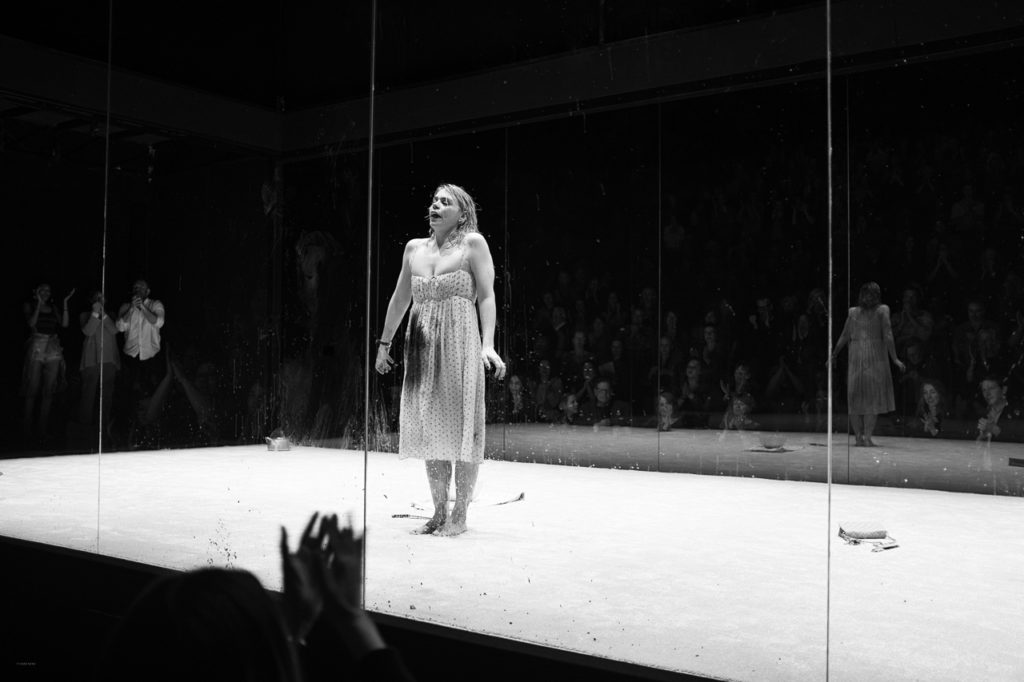
Inside the glass terrarium of a set, Billie Piper receives a standing ovation for her heart-stopping performance in Yerma.
Best moment(s): Wave after wave of sharks, in squadron formation, an aquatic equivalent to Fleet Week, an inspiring sight, in the Tuamotos -vs-The incredible aggregation of Camouflage Groupers gathering underwater expectantly, poised and ready for the full moon signal to spawn-vs-The unearthly quiet of a nearly deserted Central Park, transformed in minutes from florid fall to winter splendor, in a short but spectacular November snowfall.
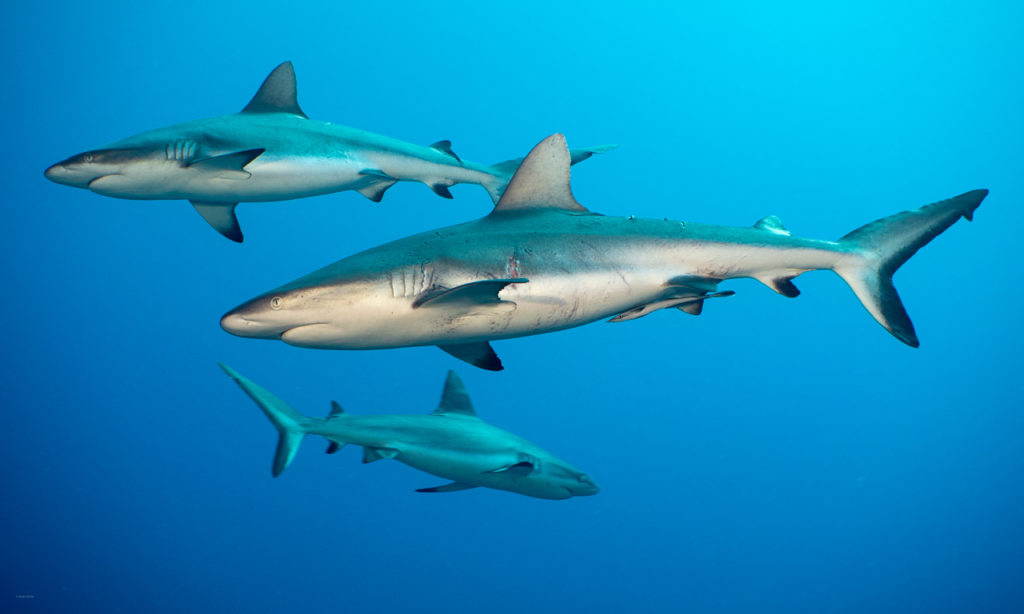
Gray reef sharks parade back and forth in the channel separately the lagoon and ocean at Fakarava Sur.
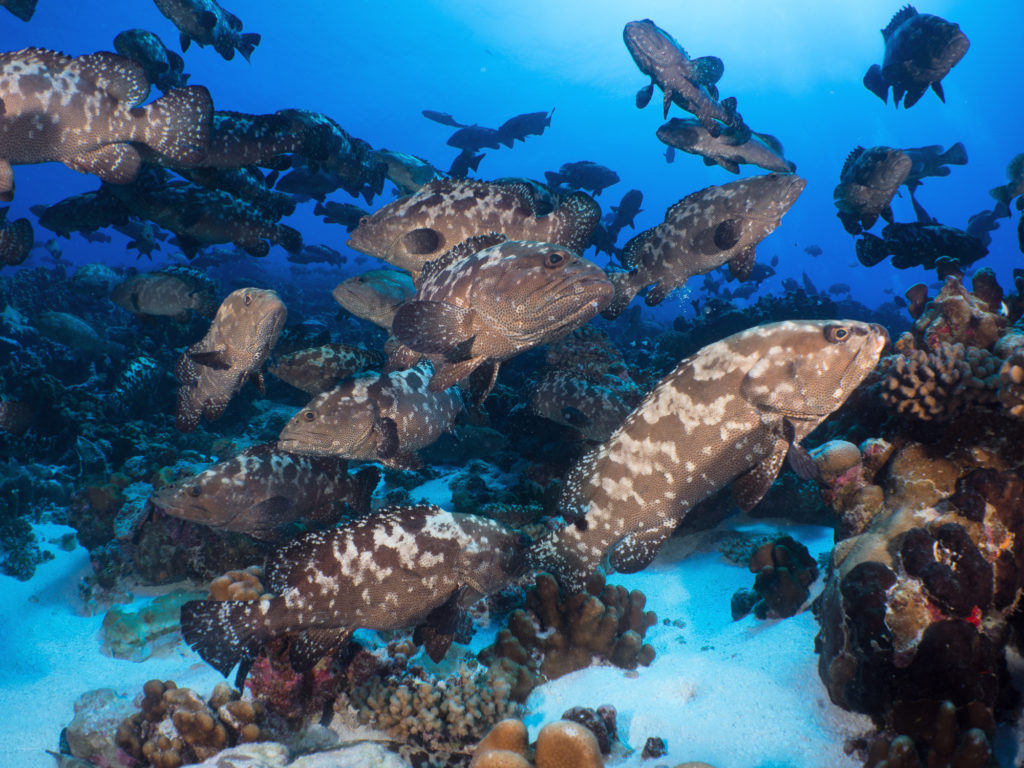
A mass grouping of groupers gathers in anticipation of the full moon in summer in the atolls of the Tuamotos, French Polynesia.

